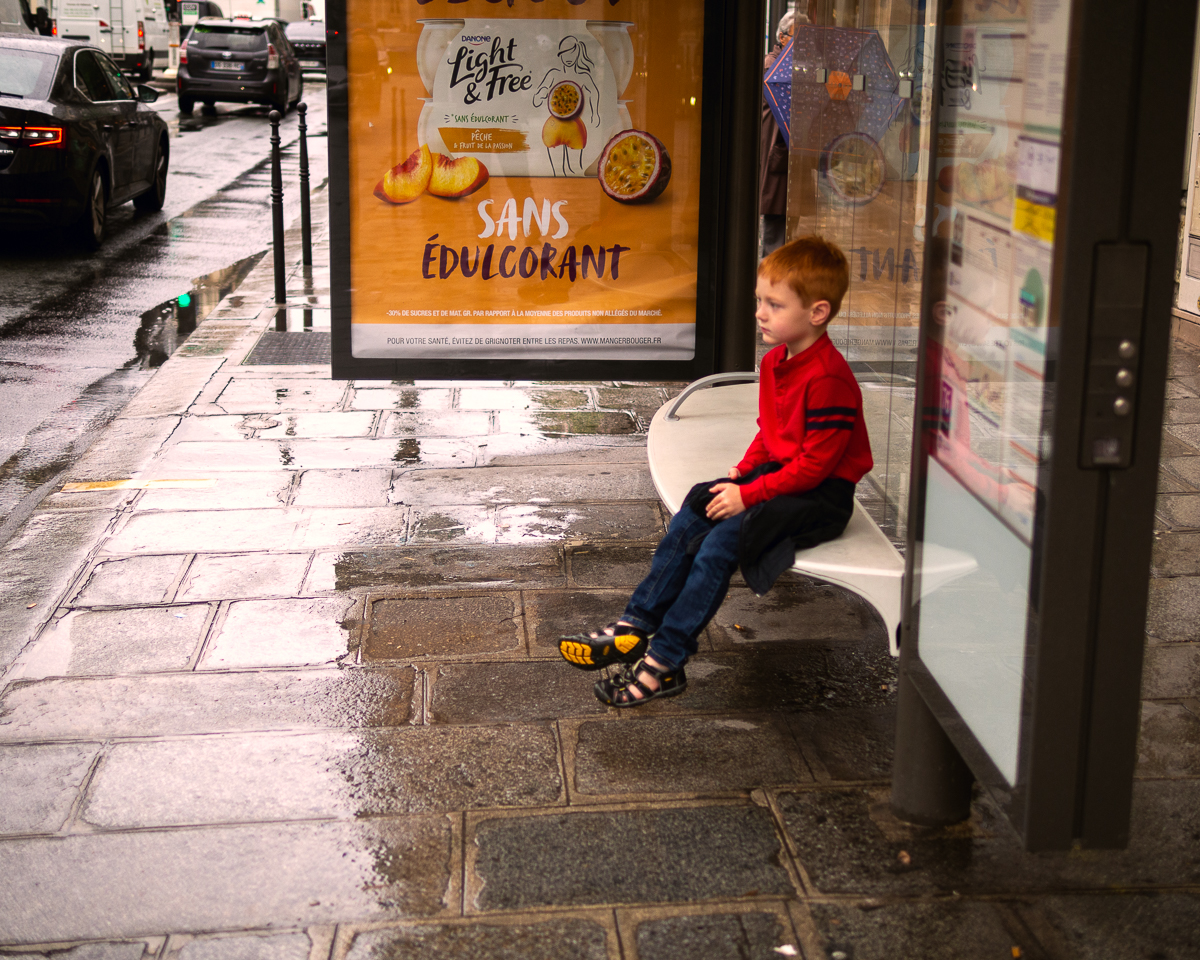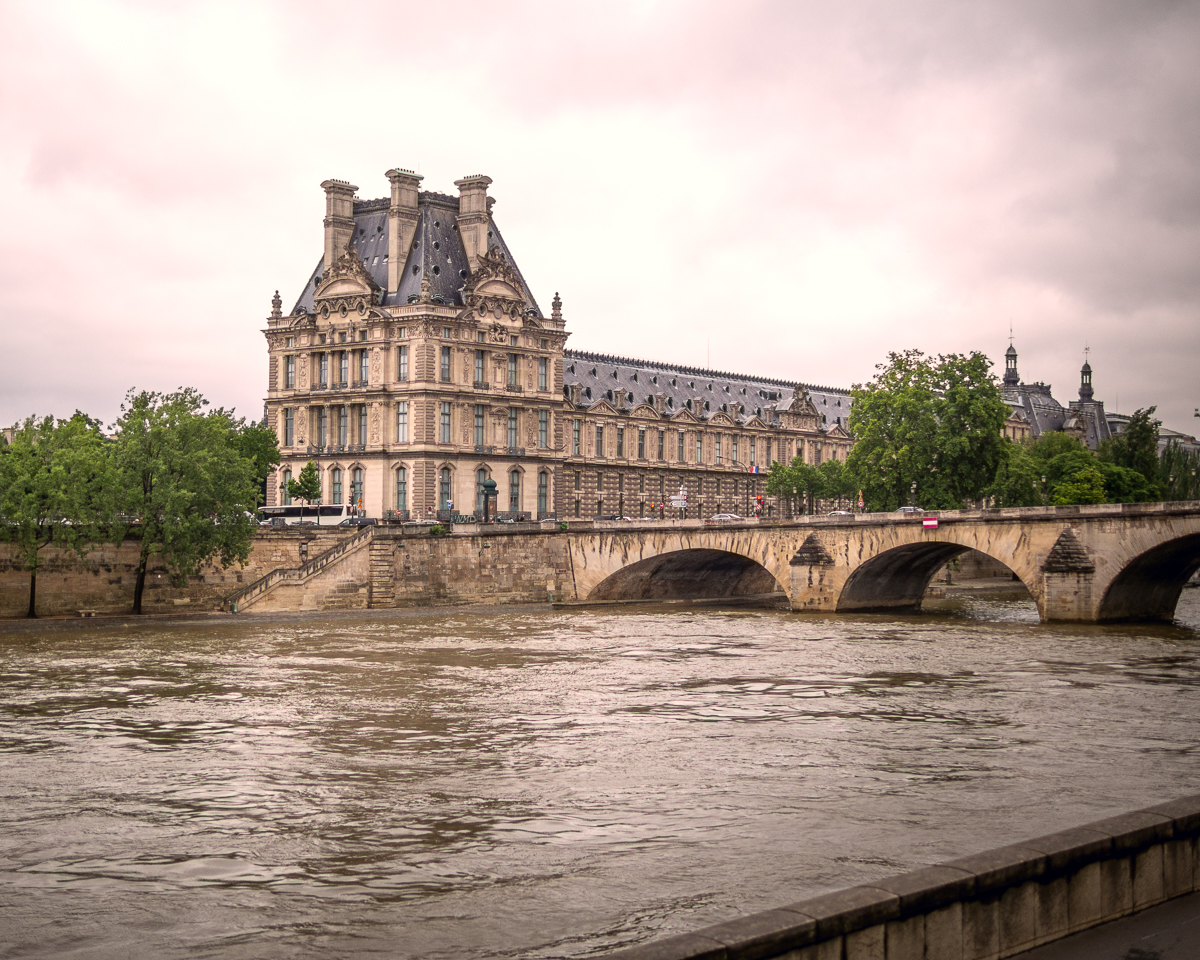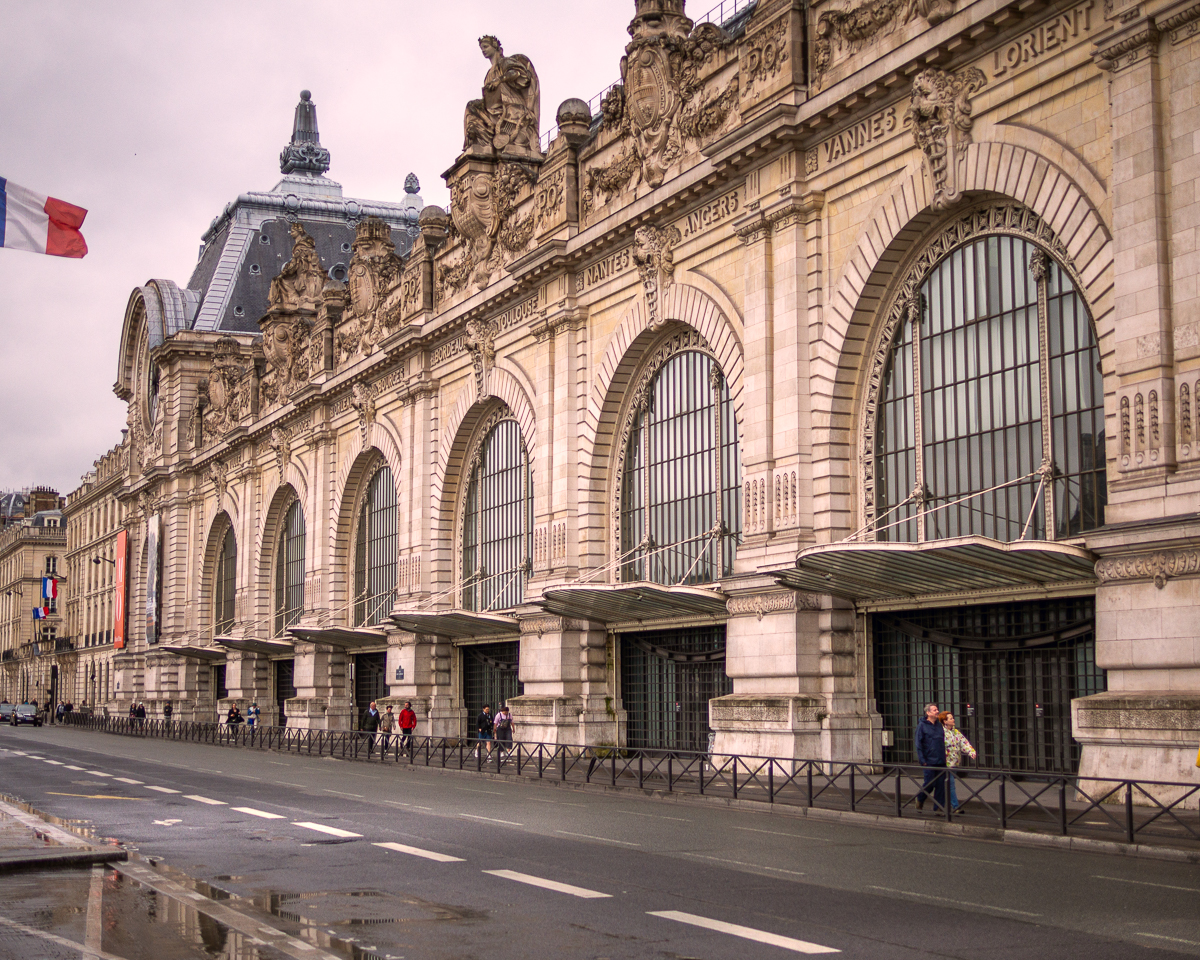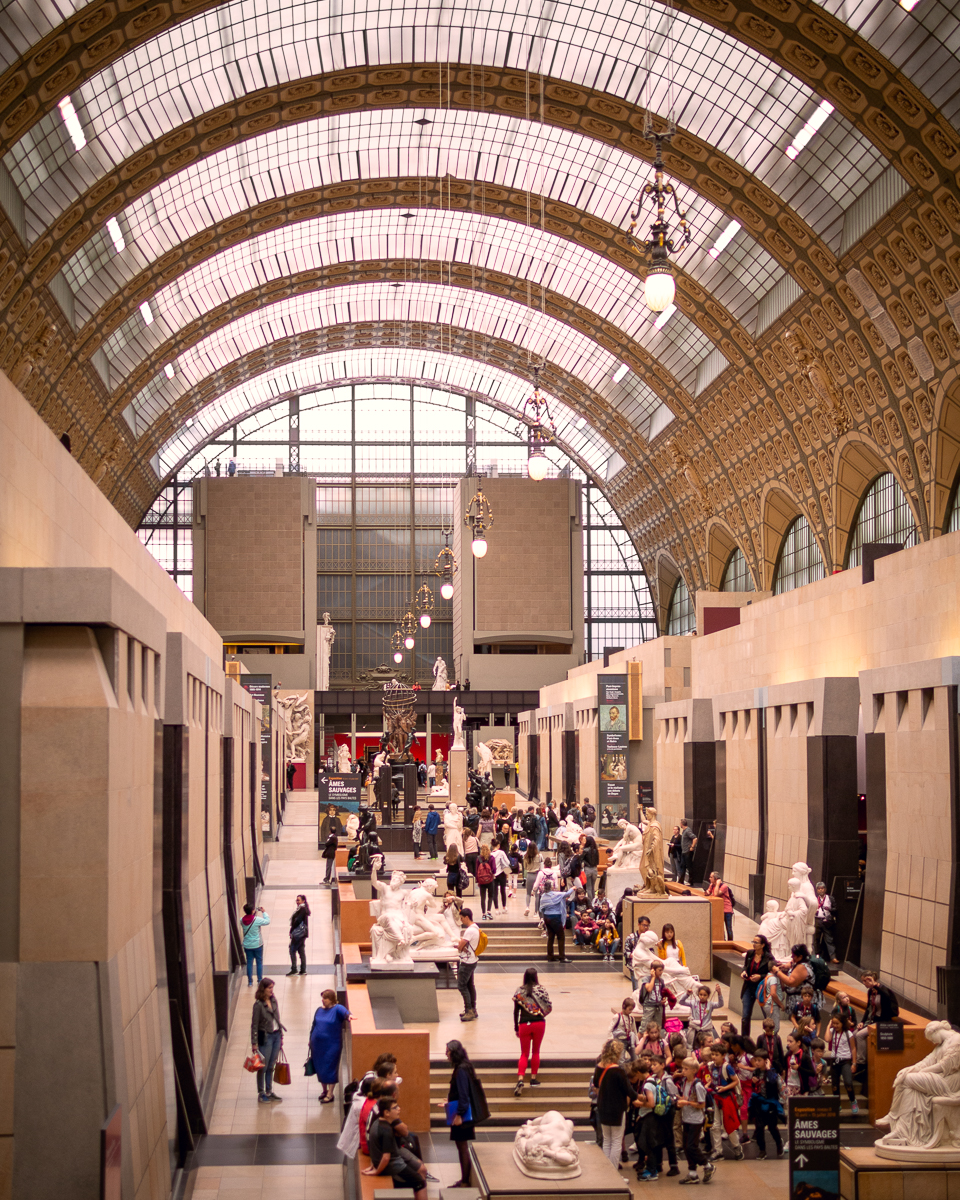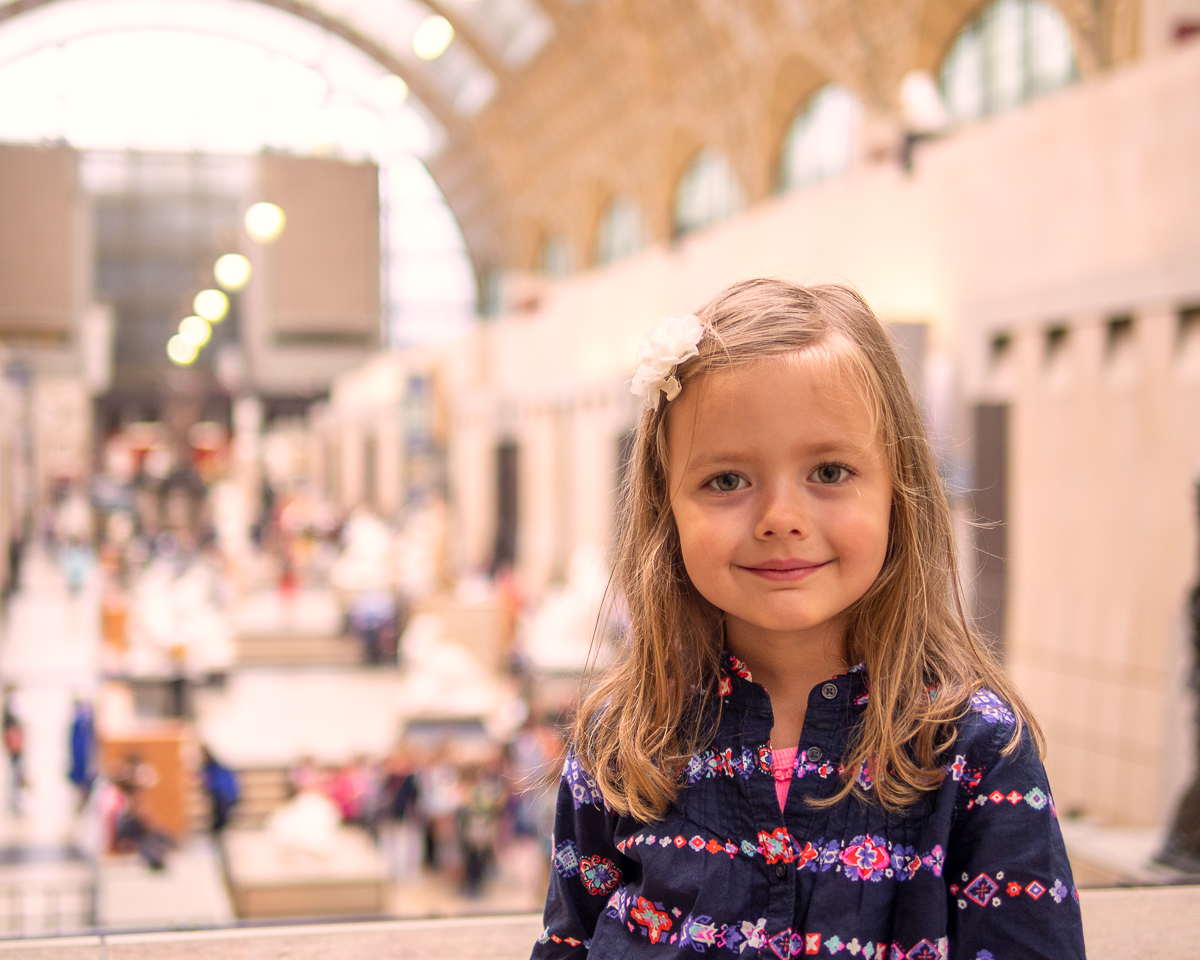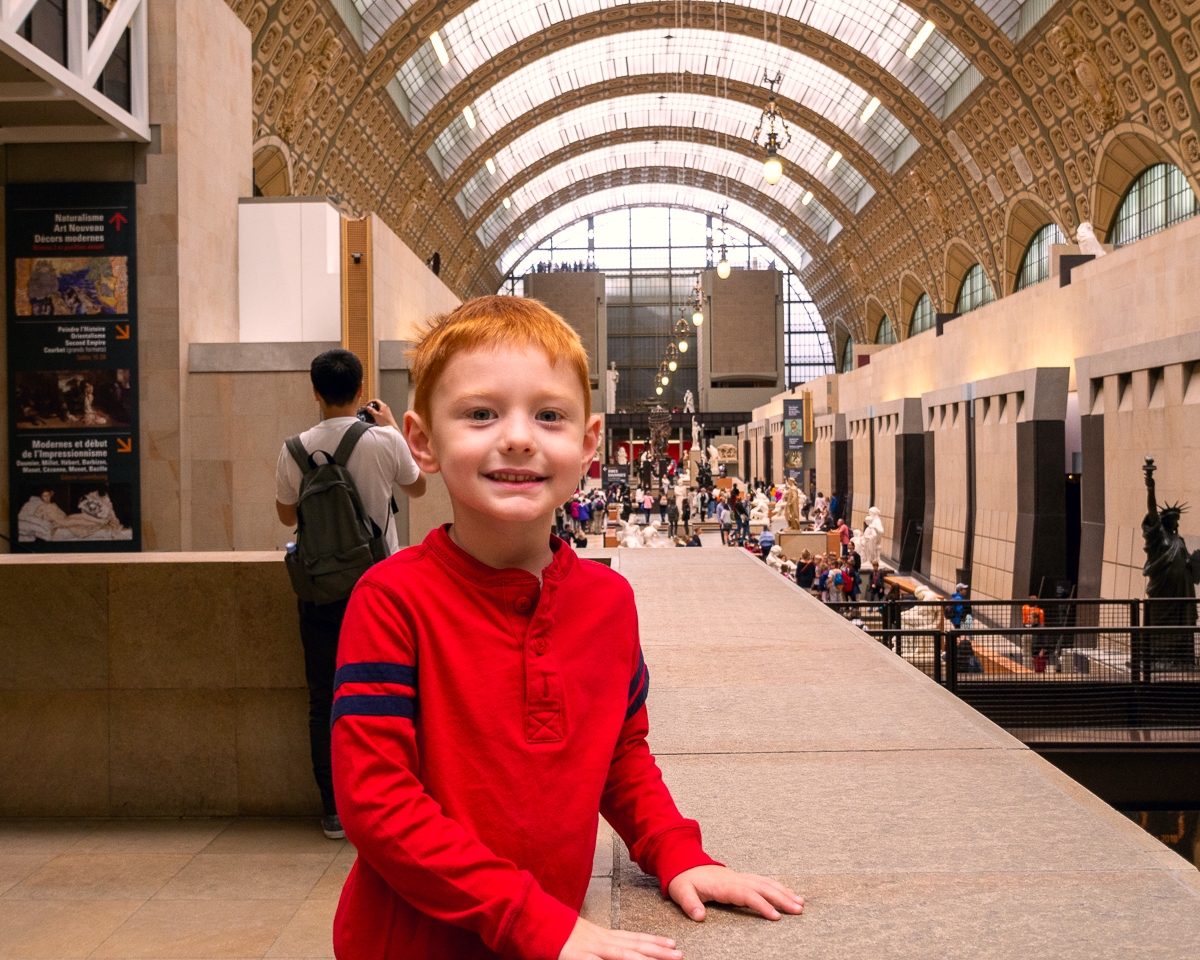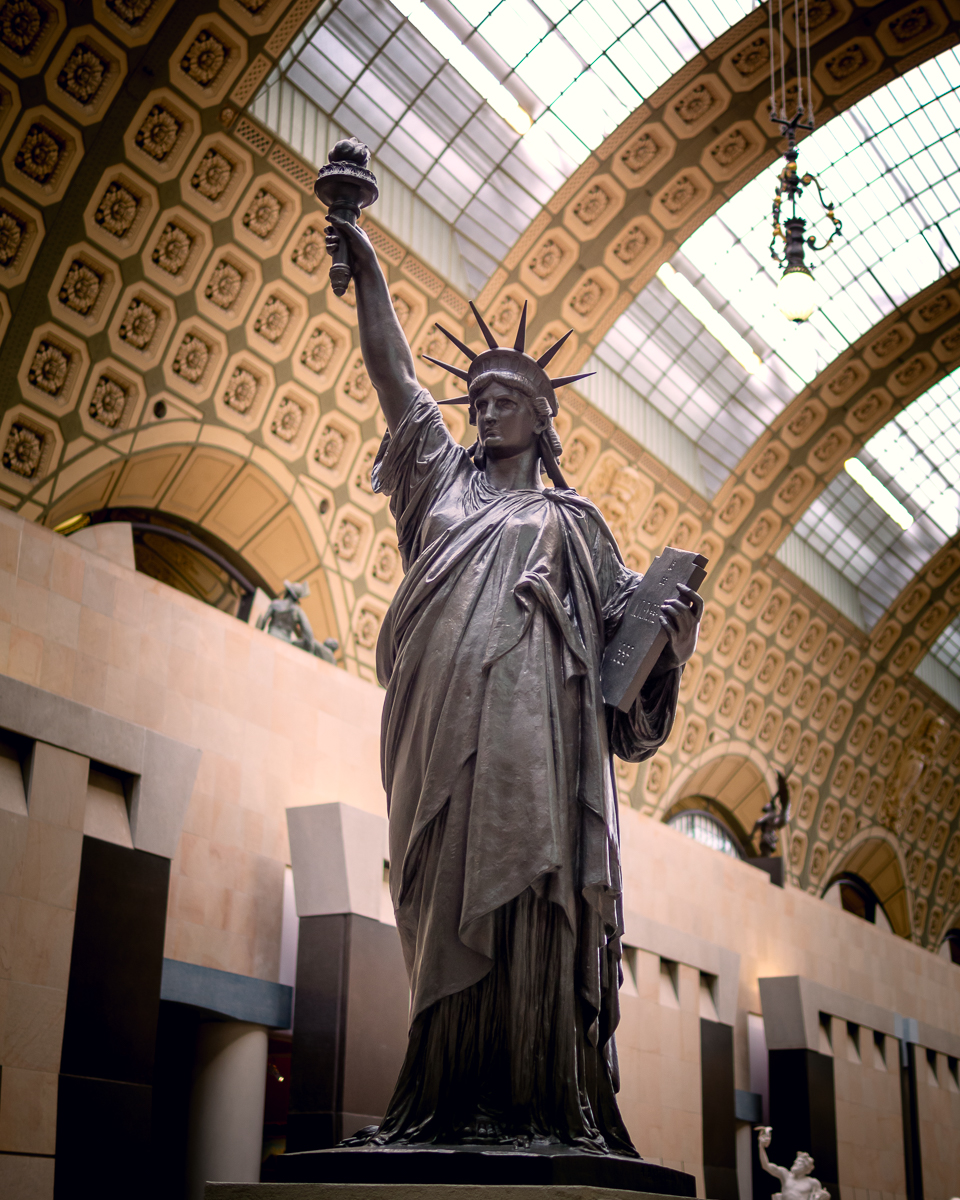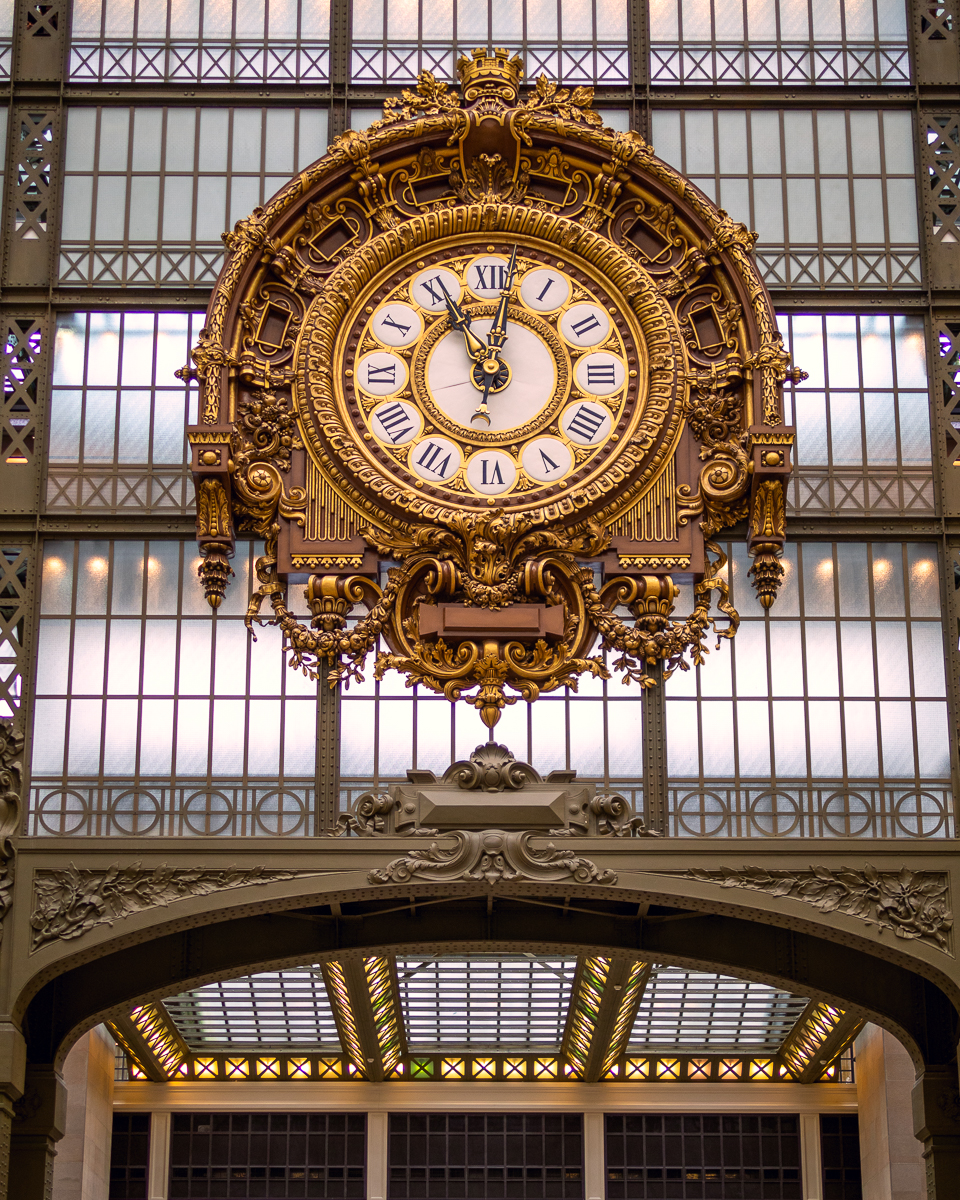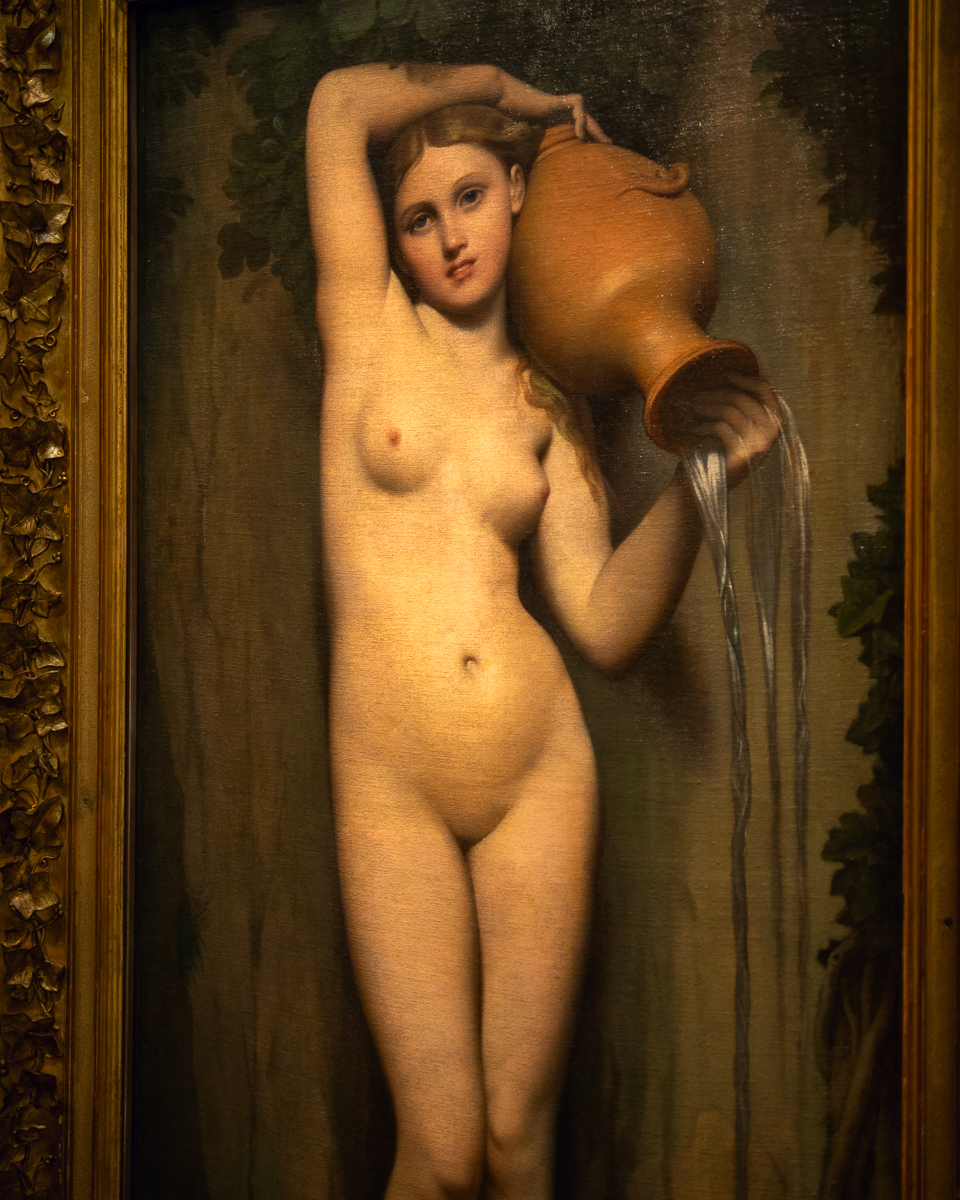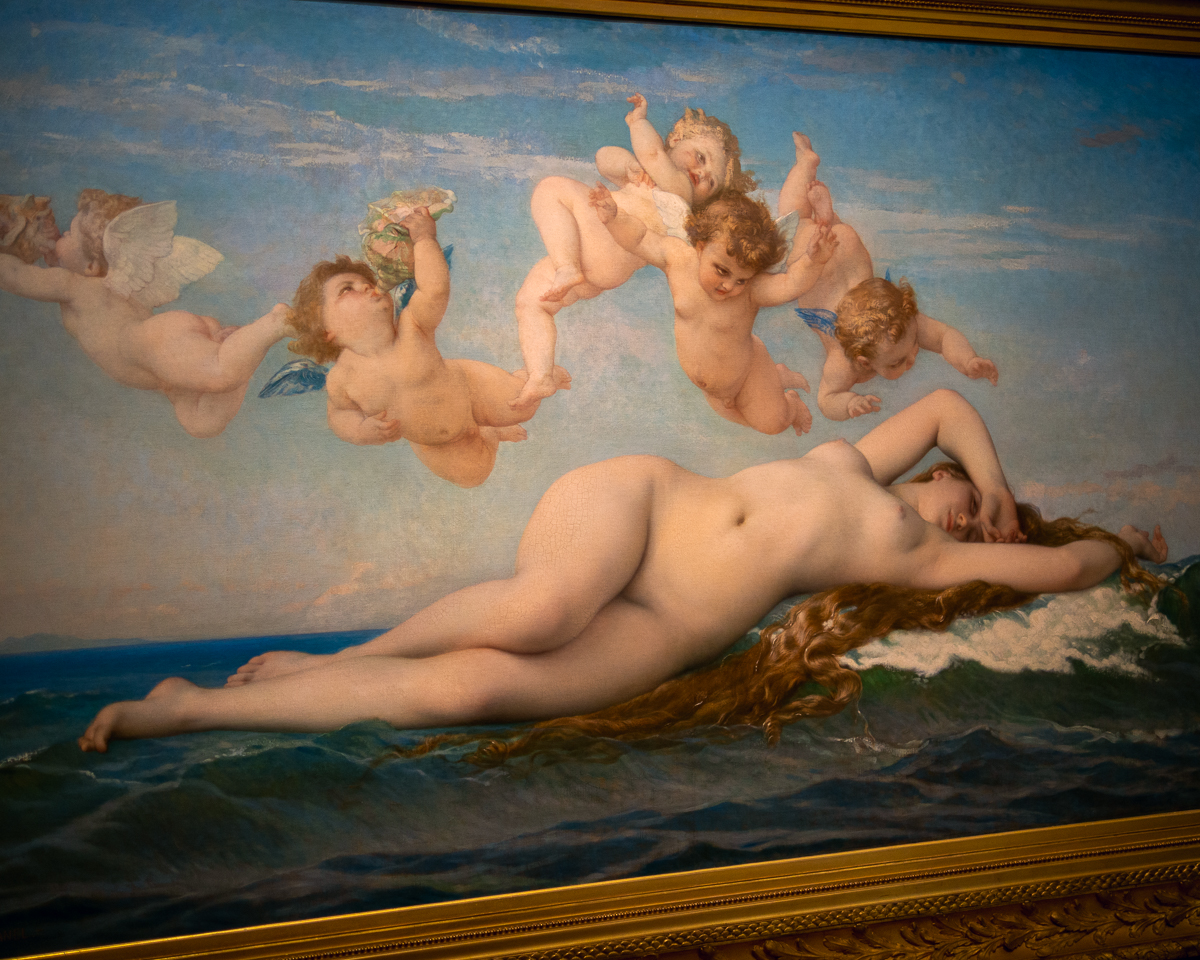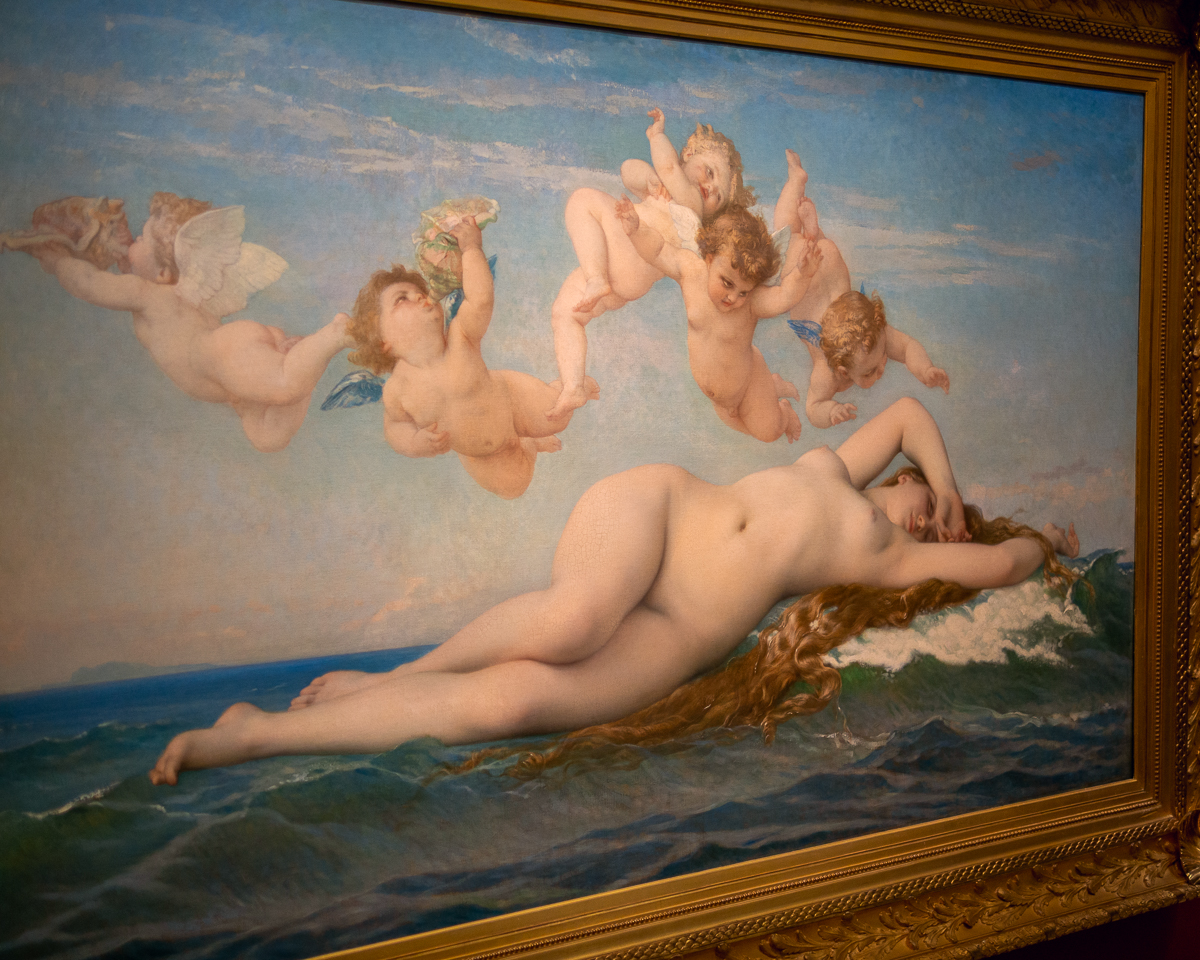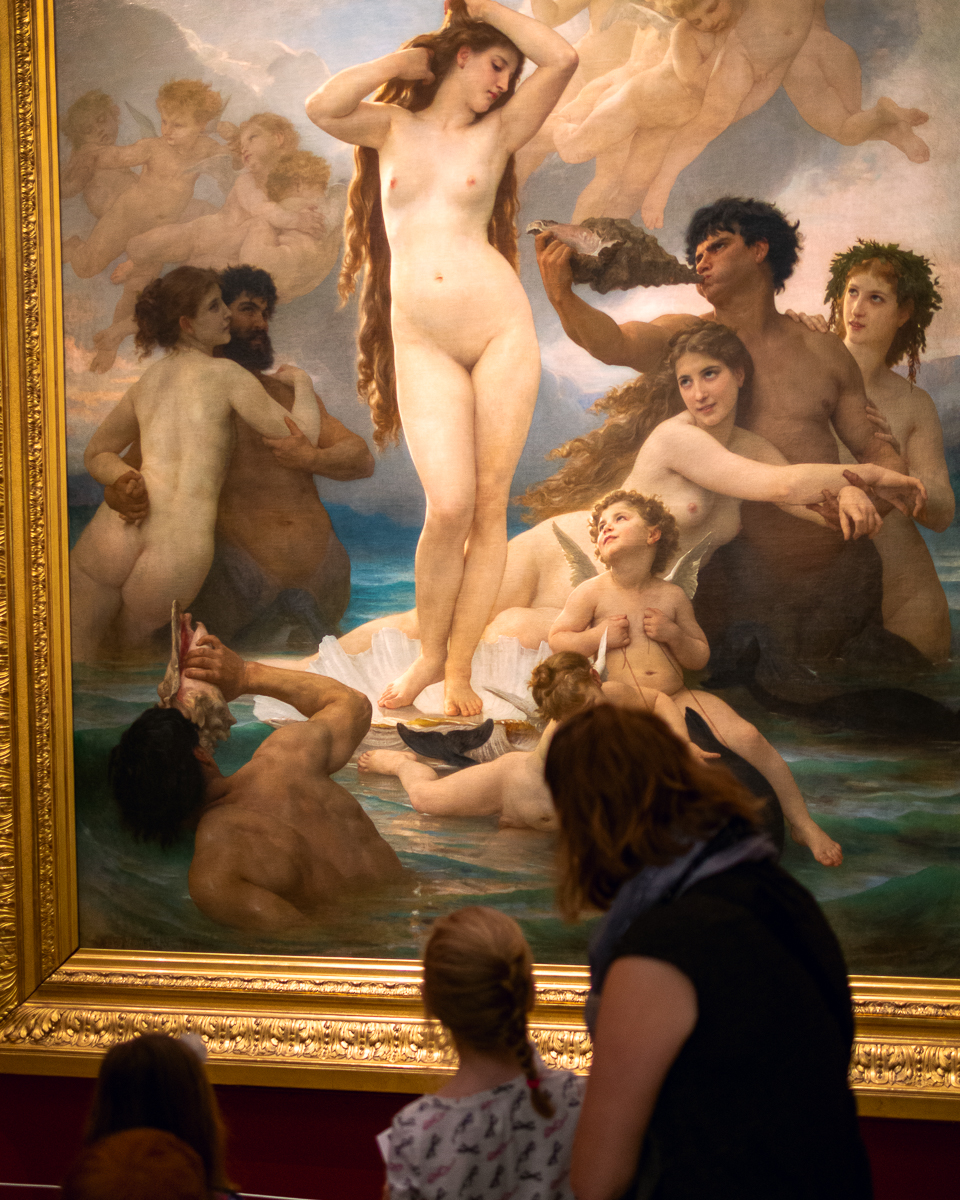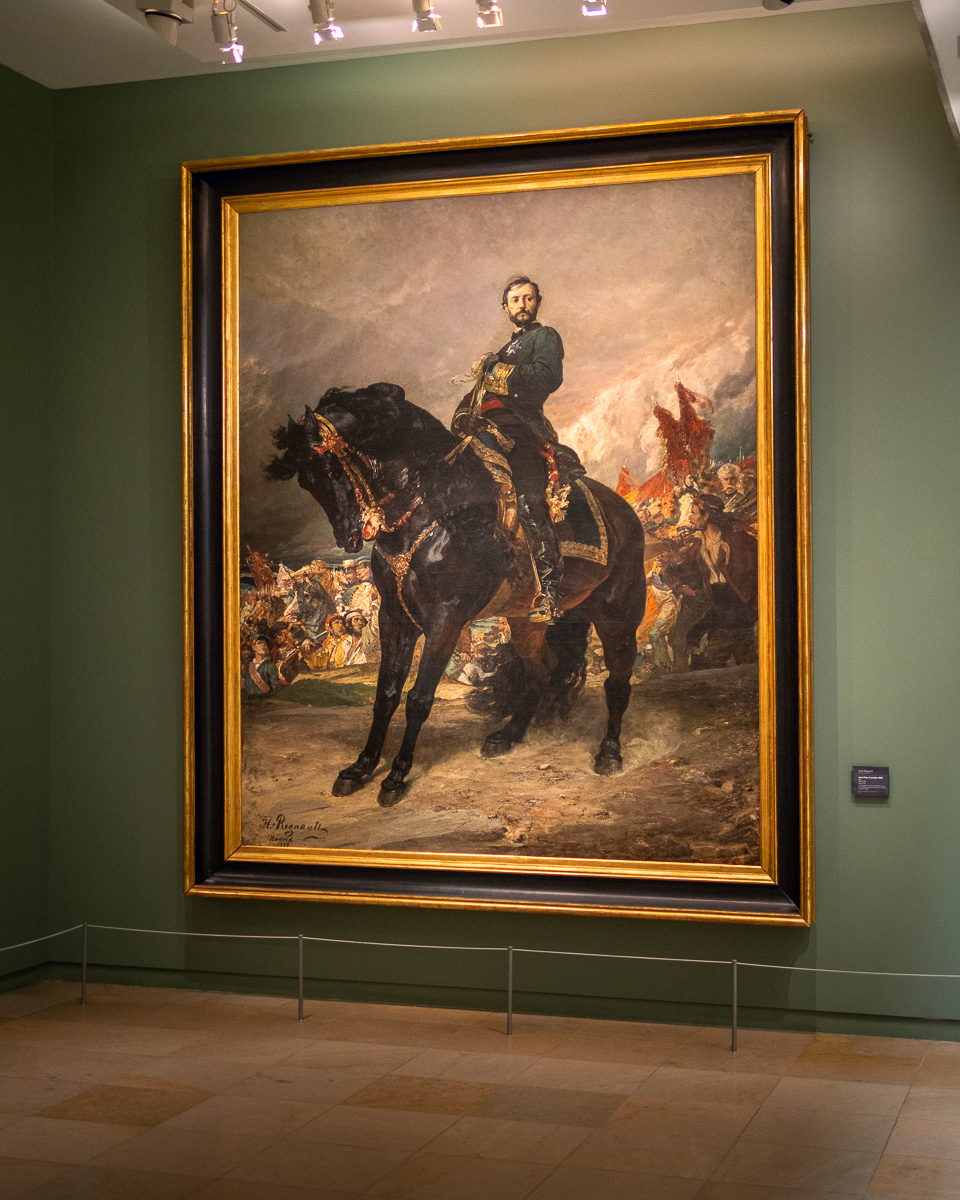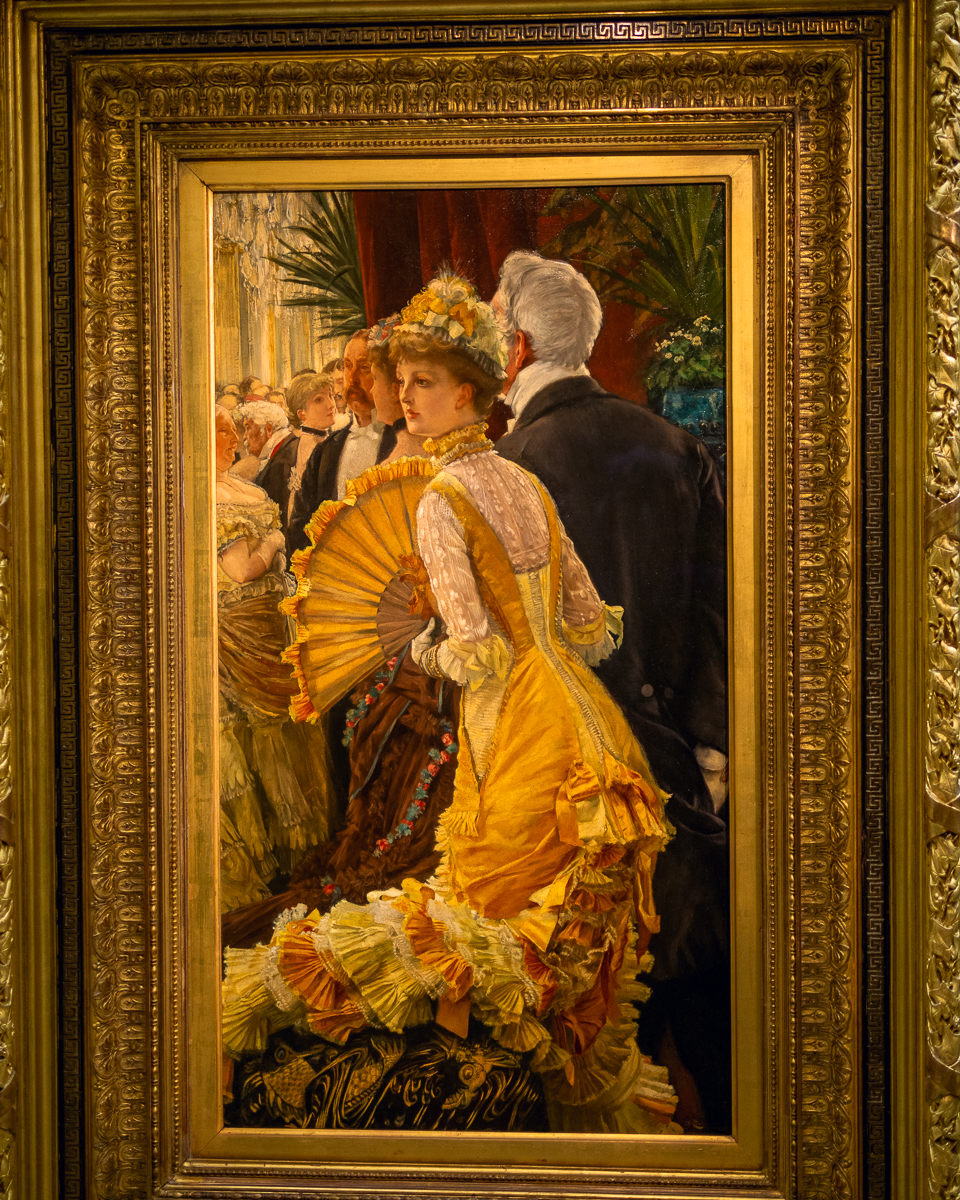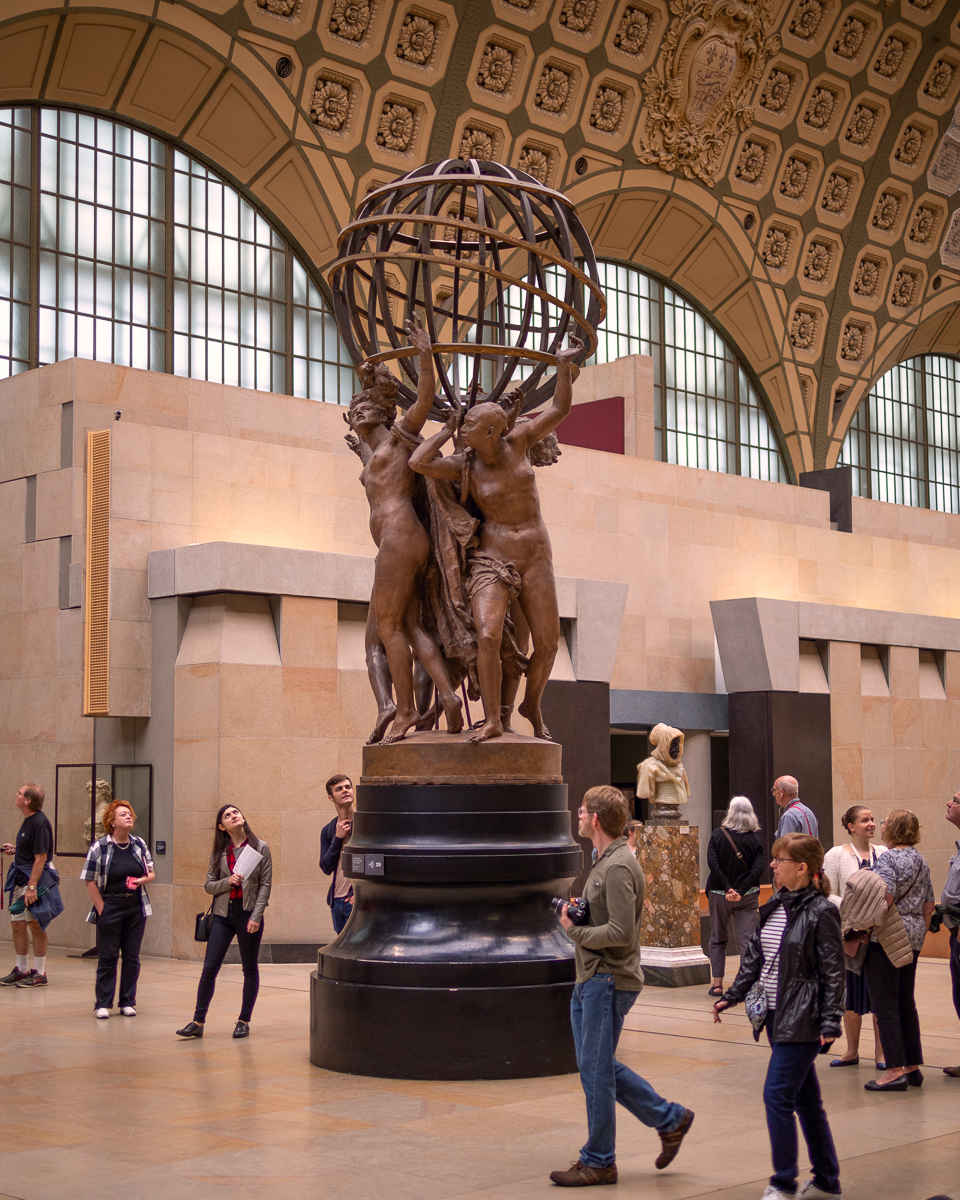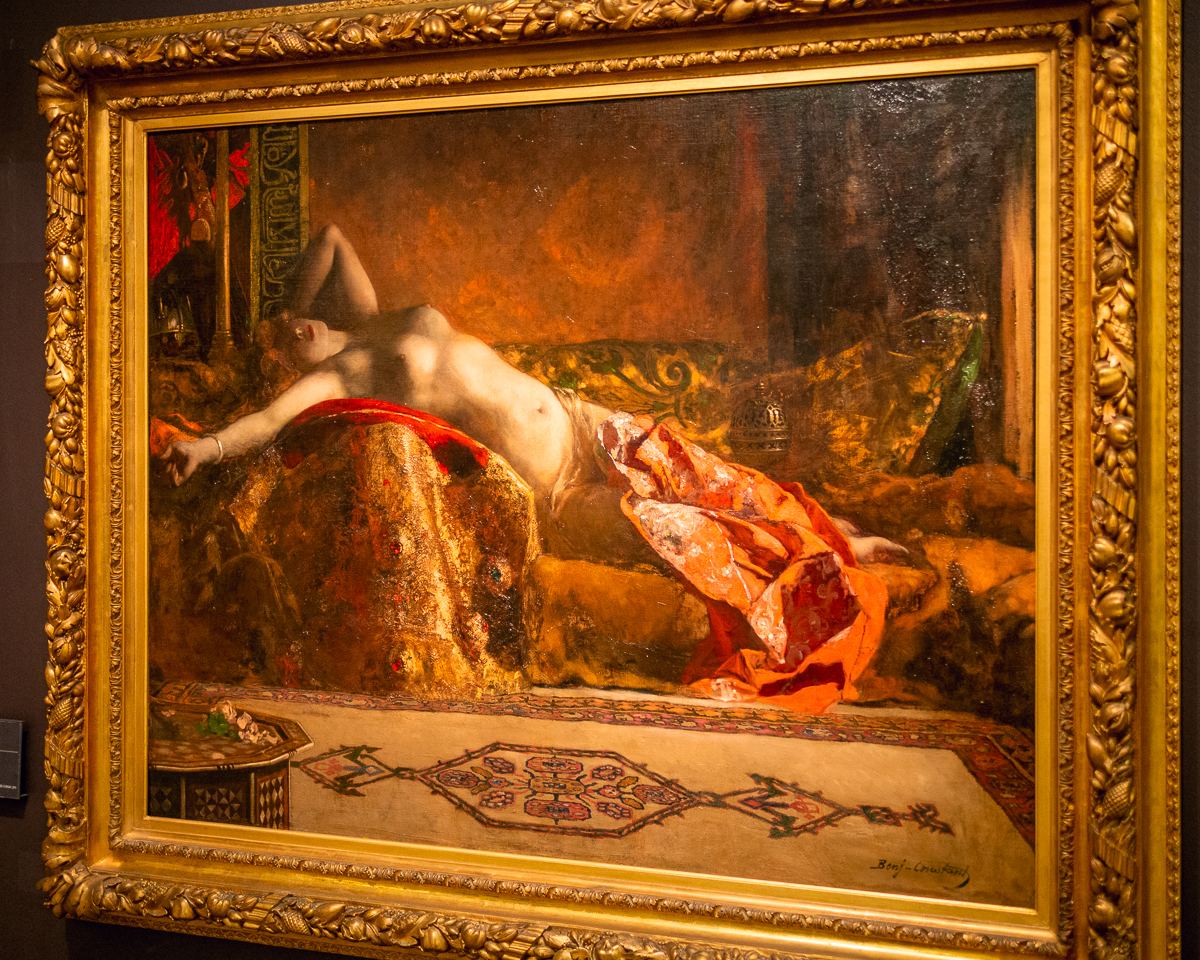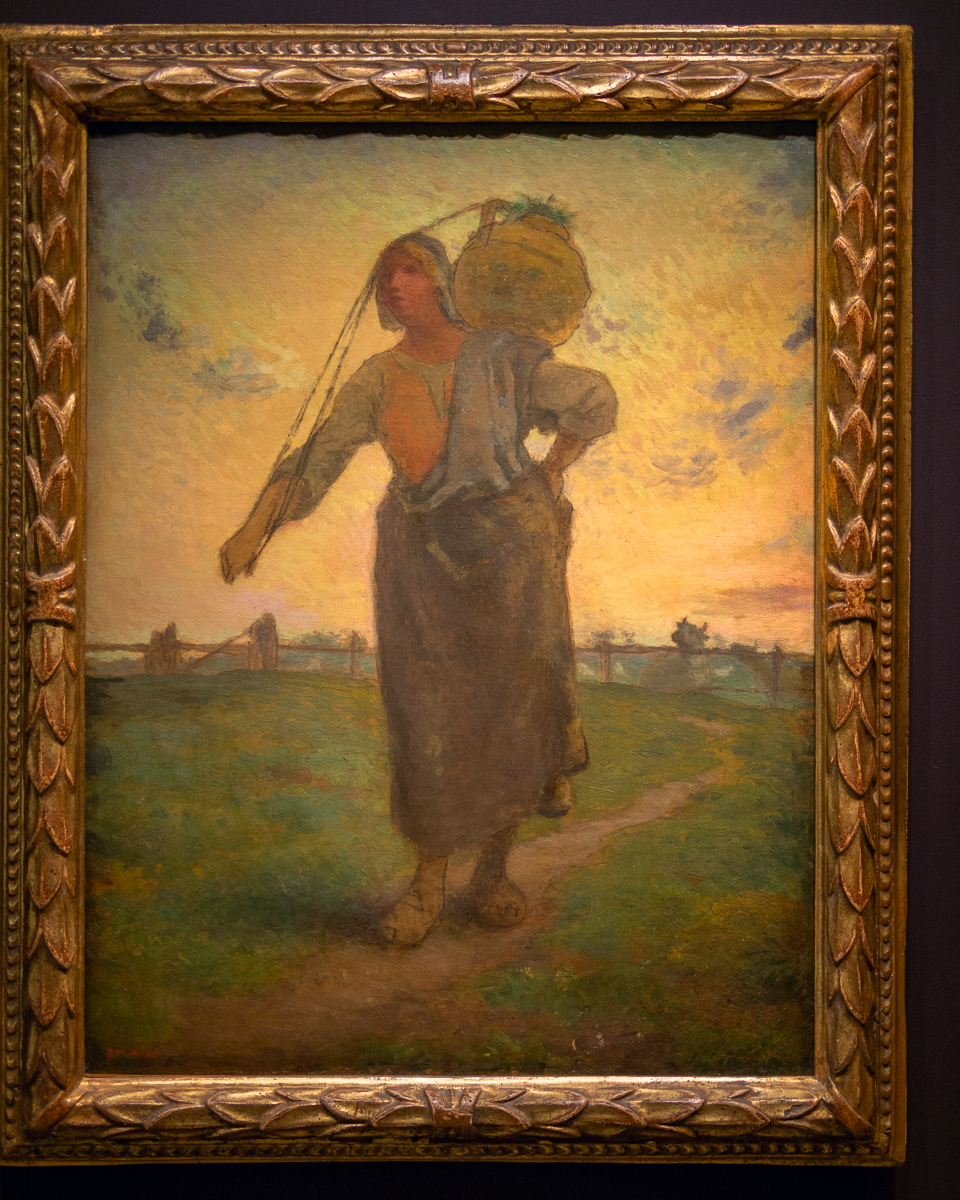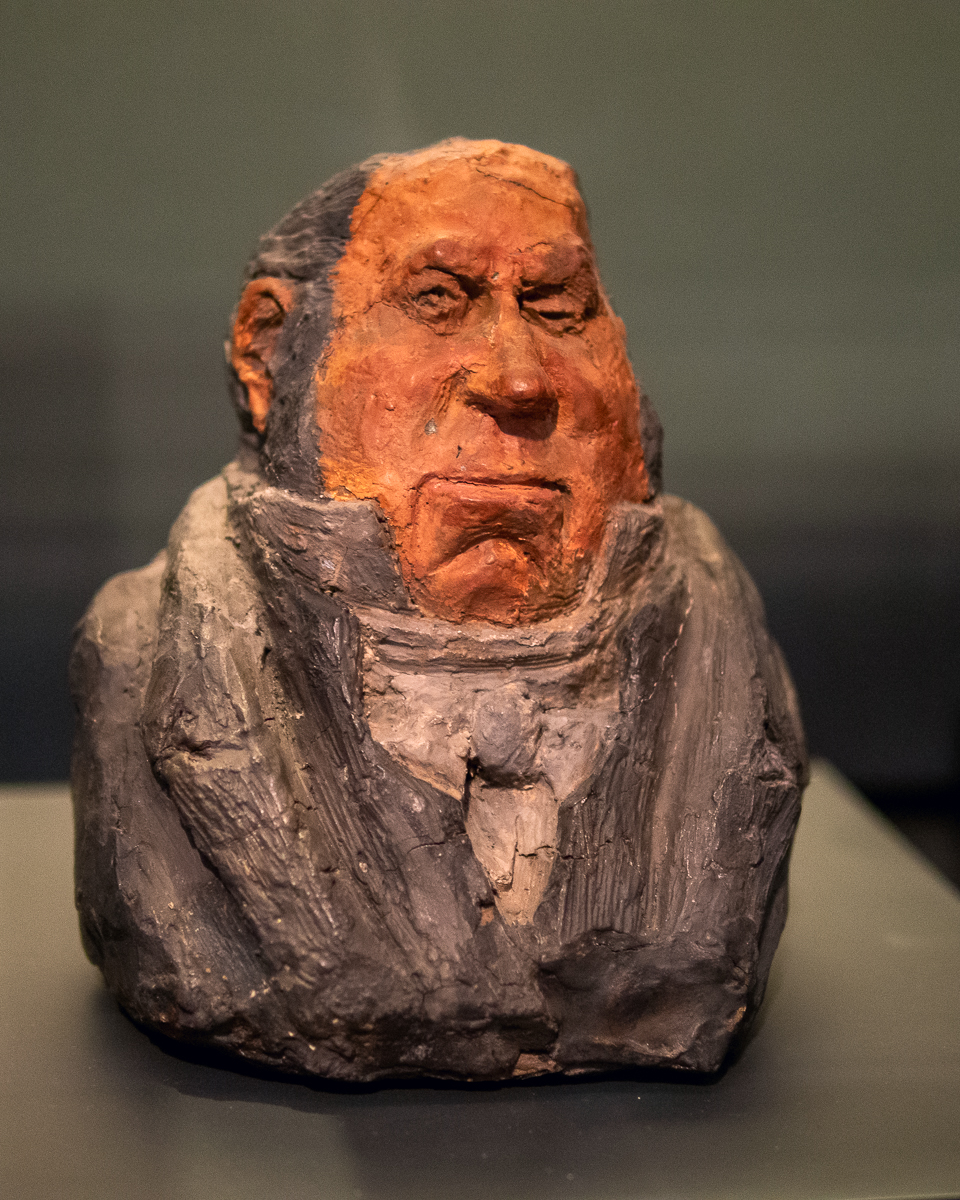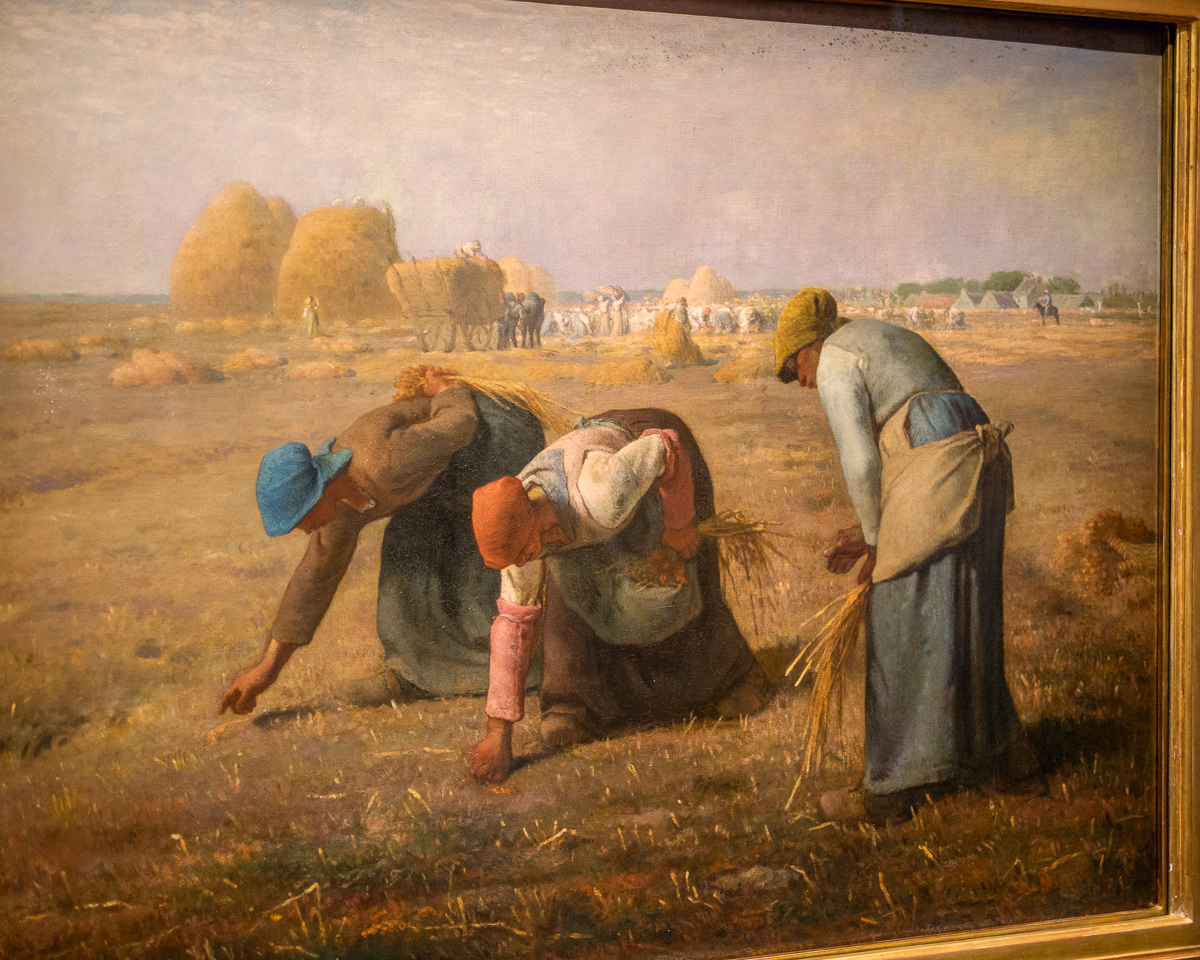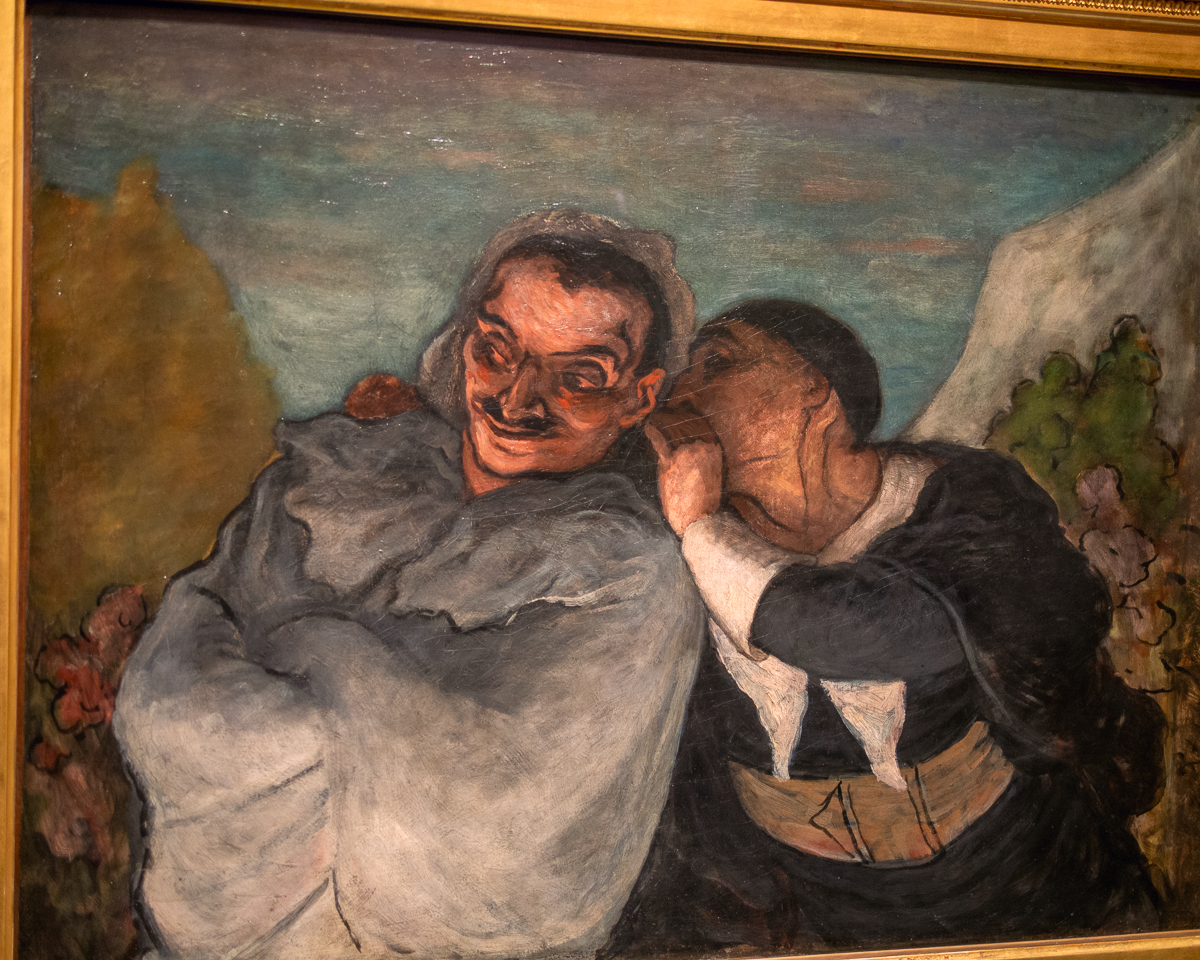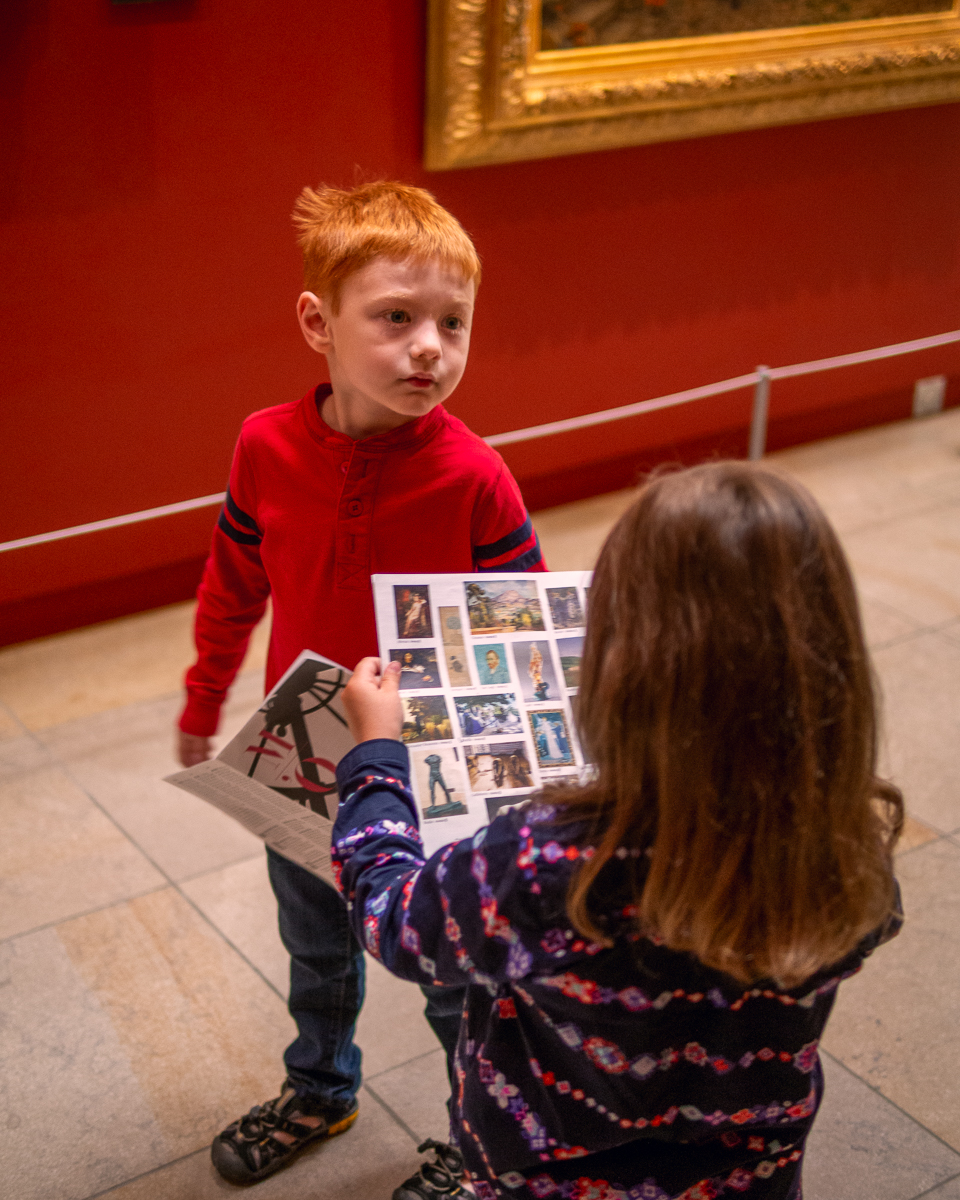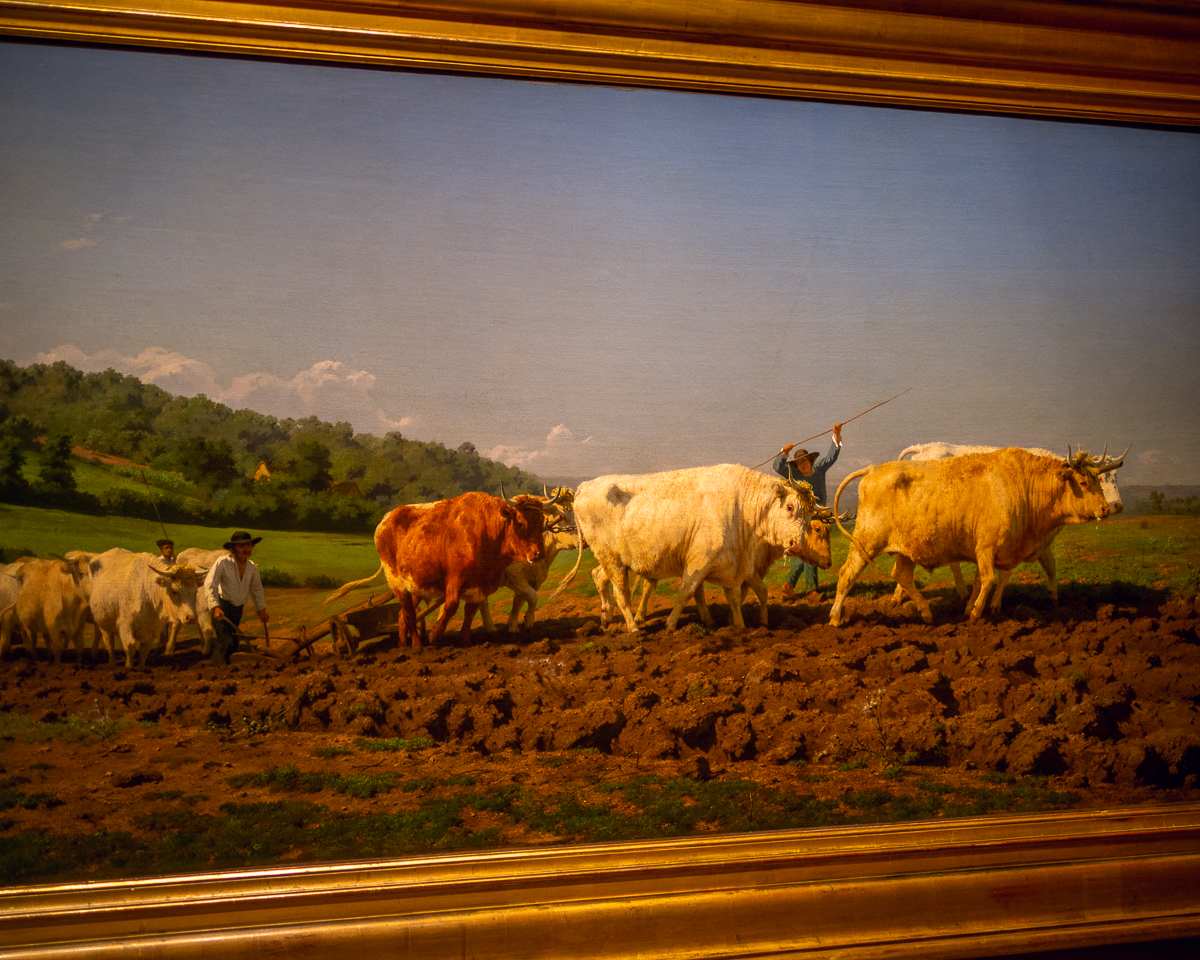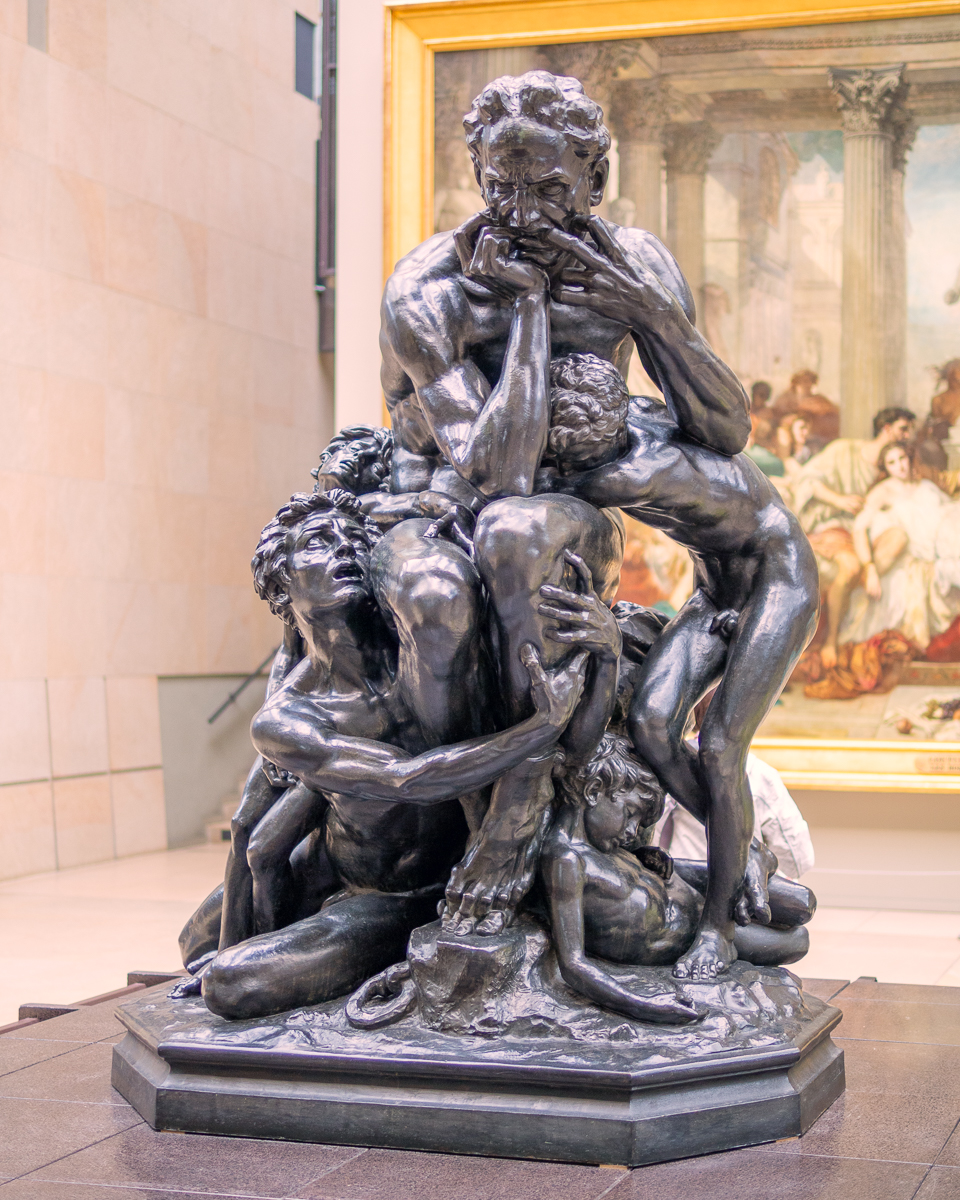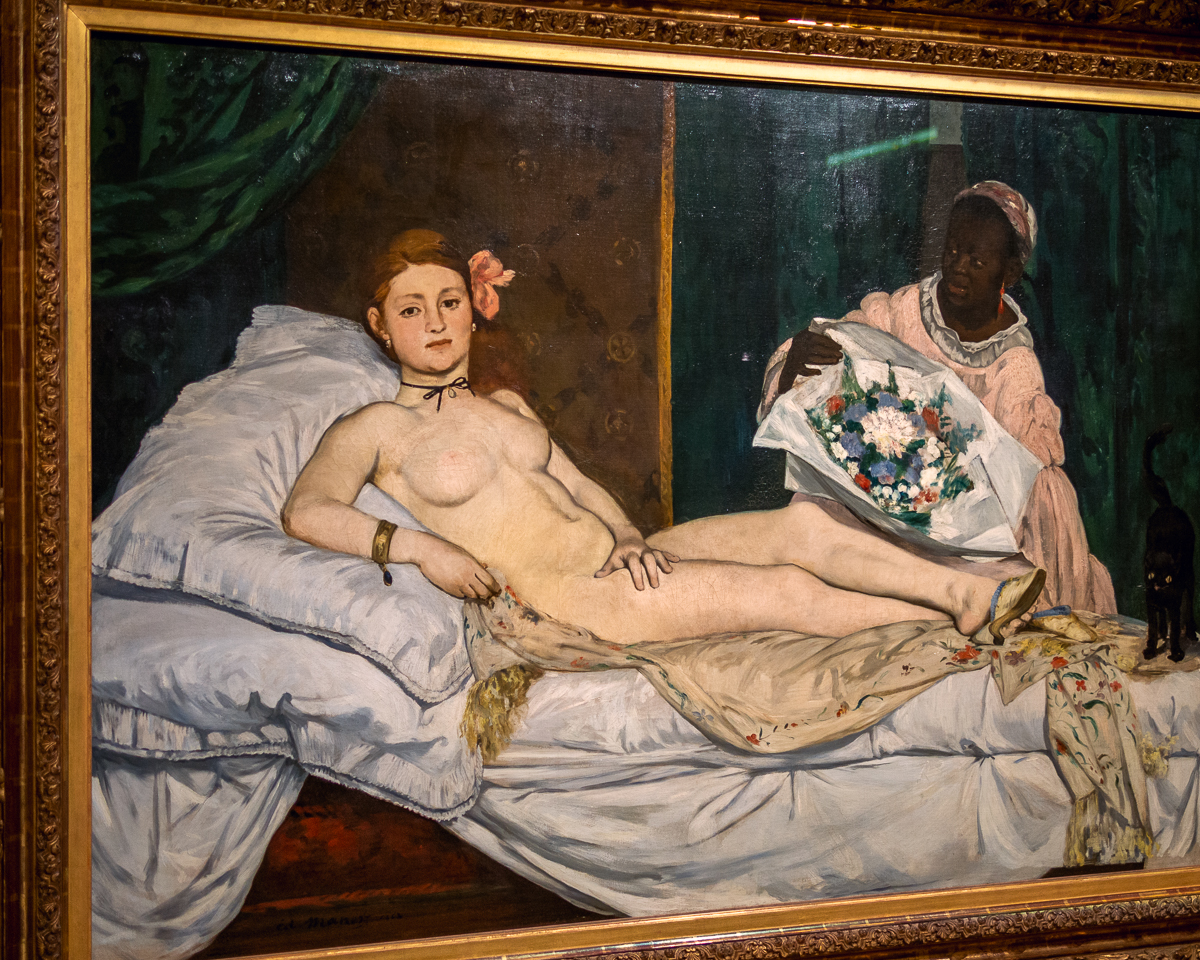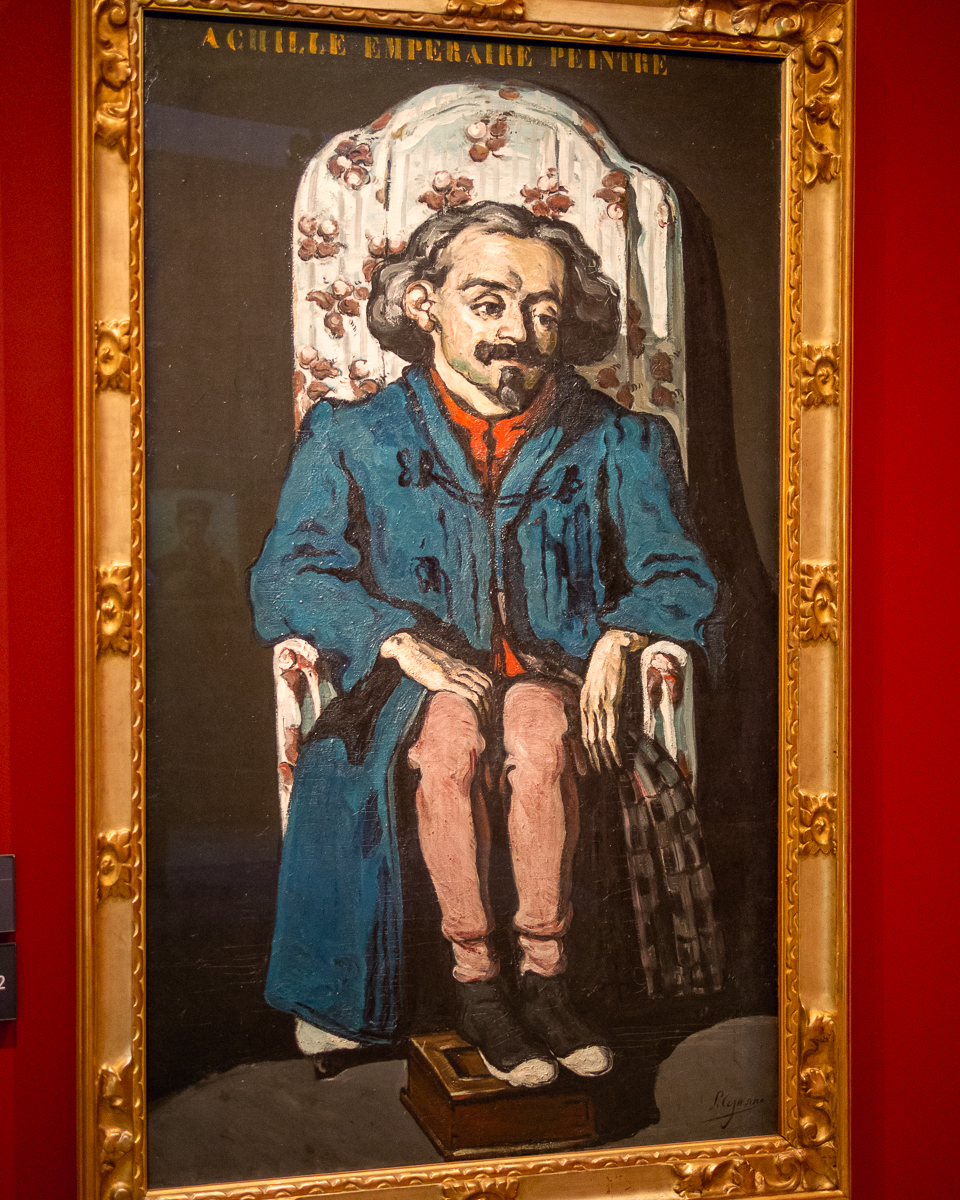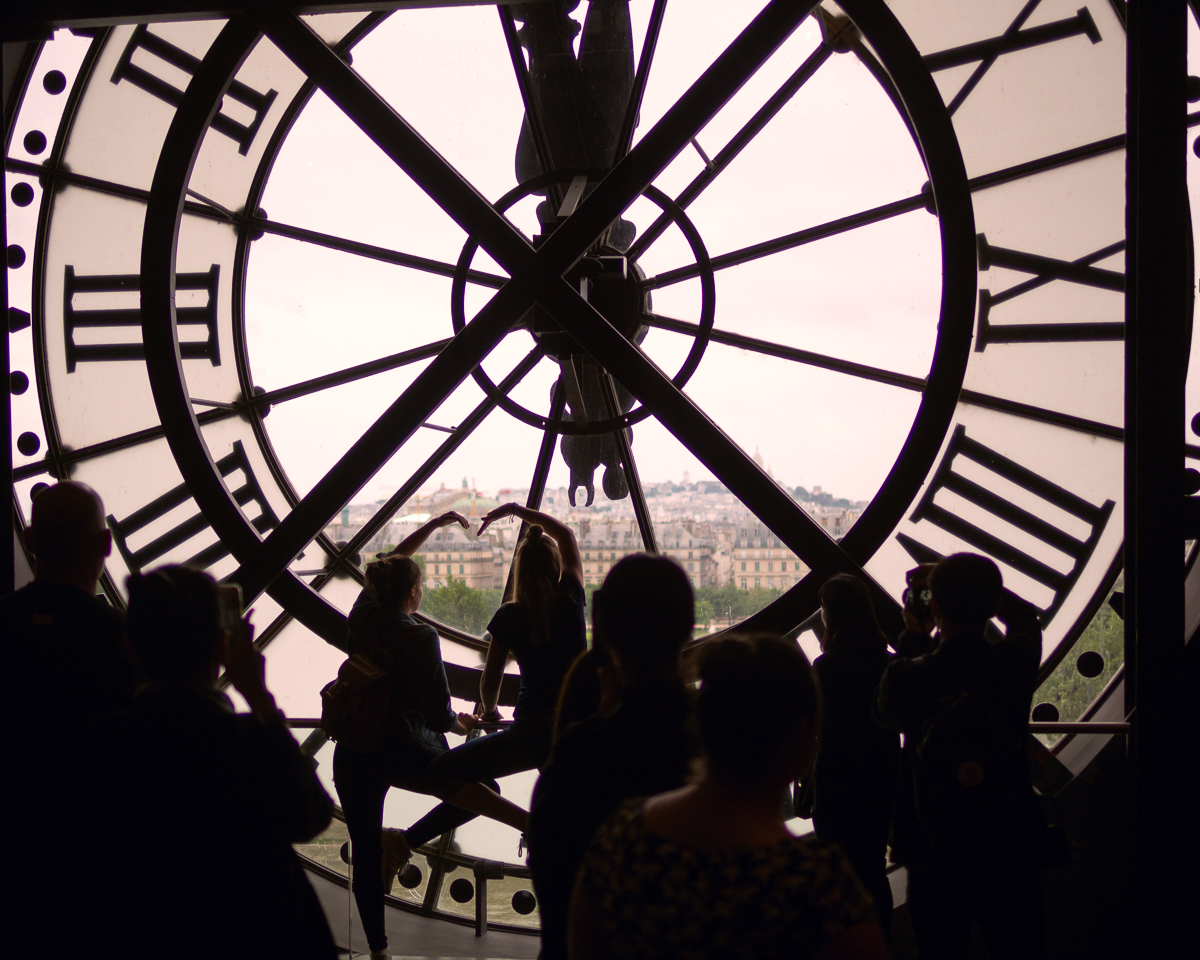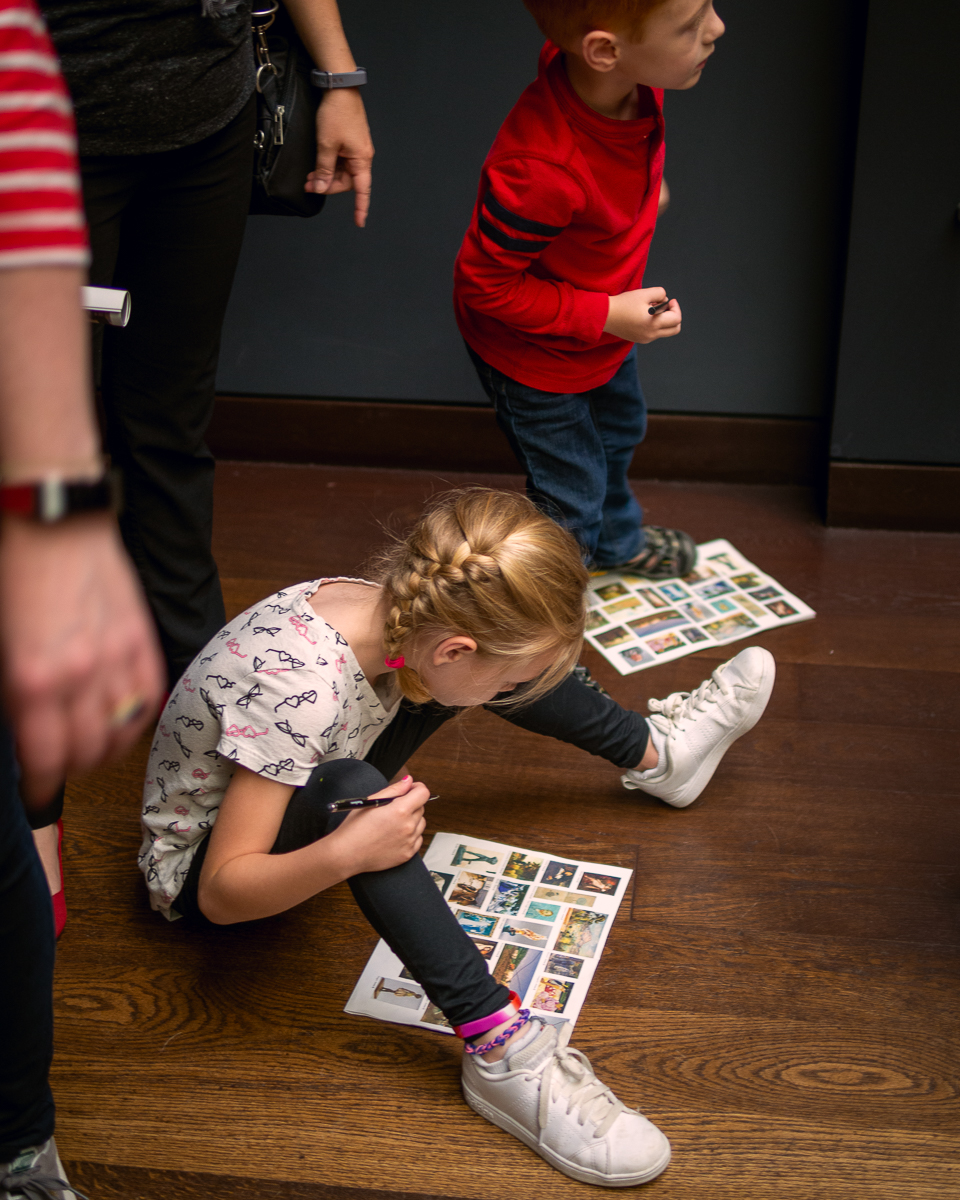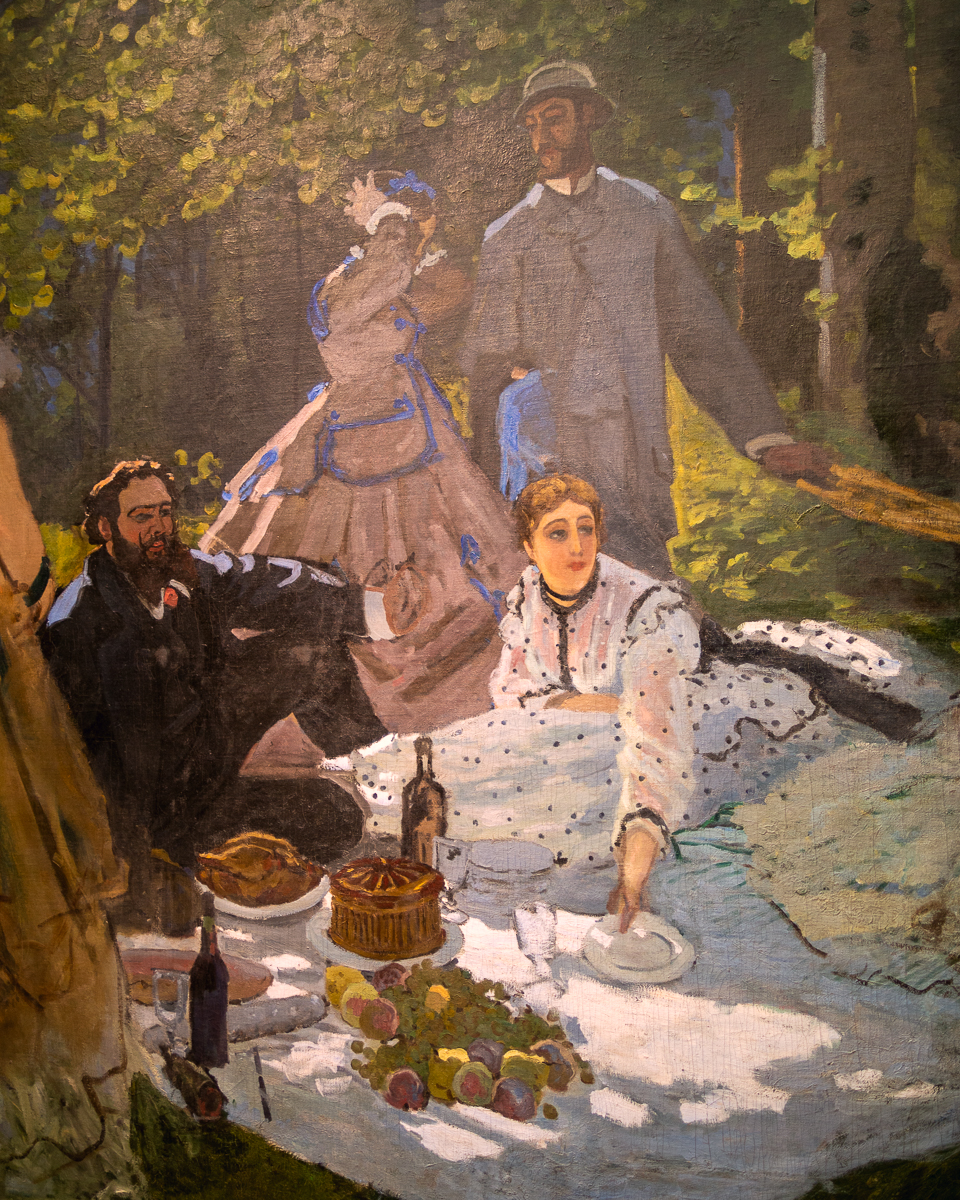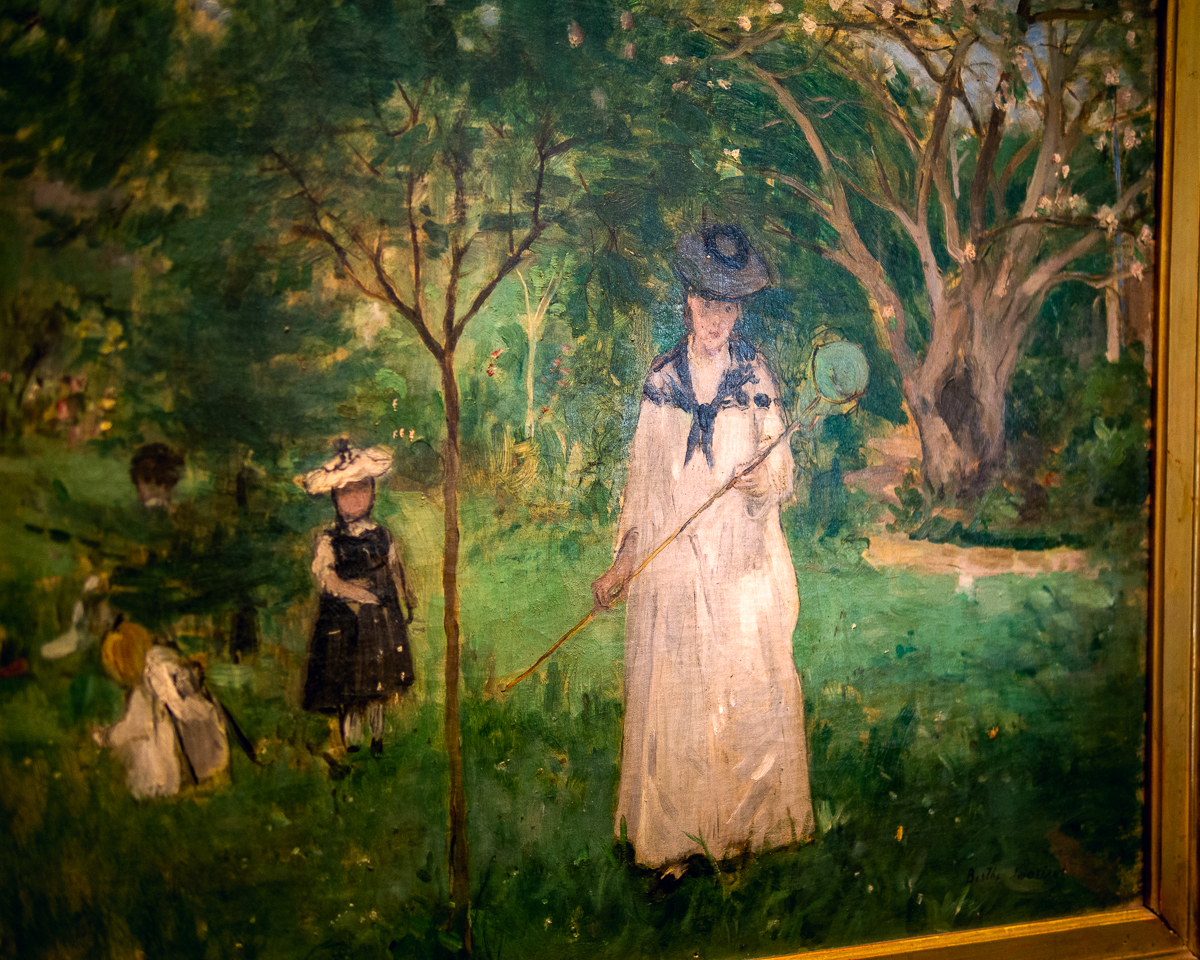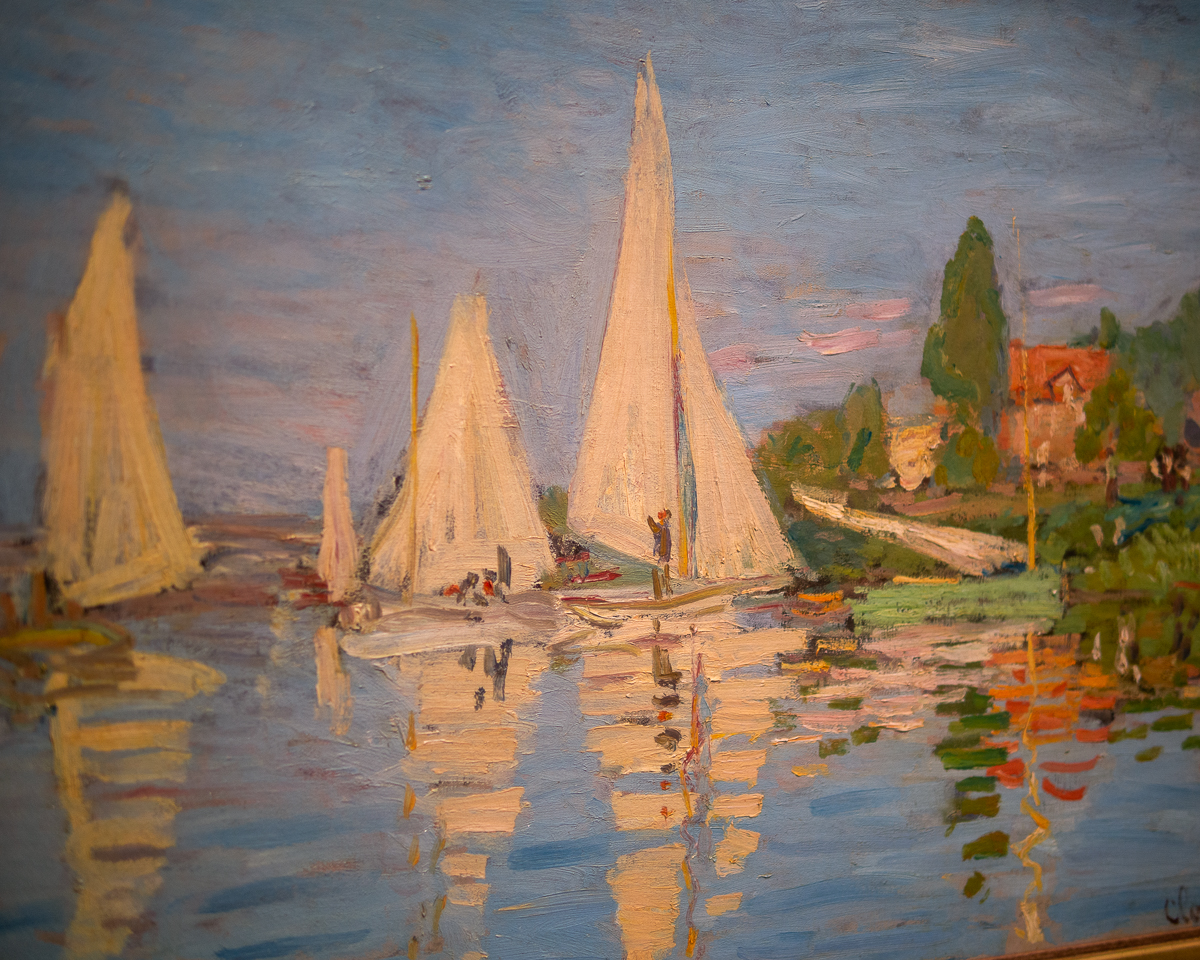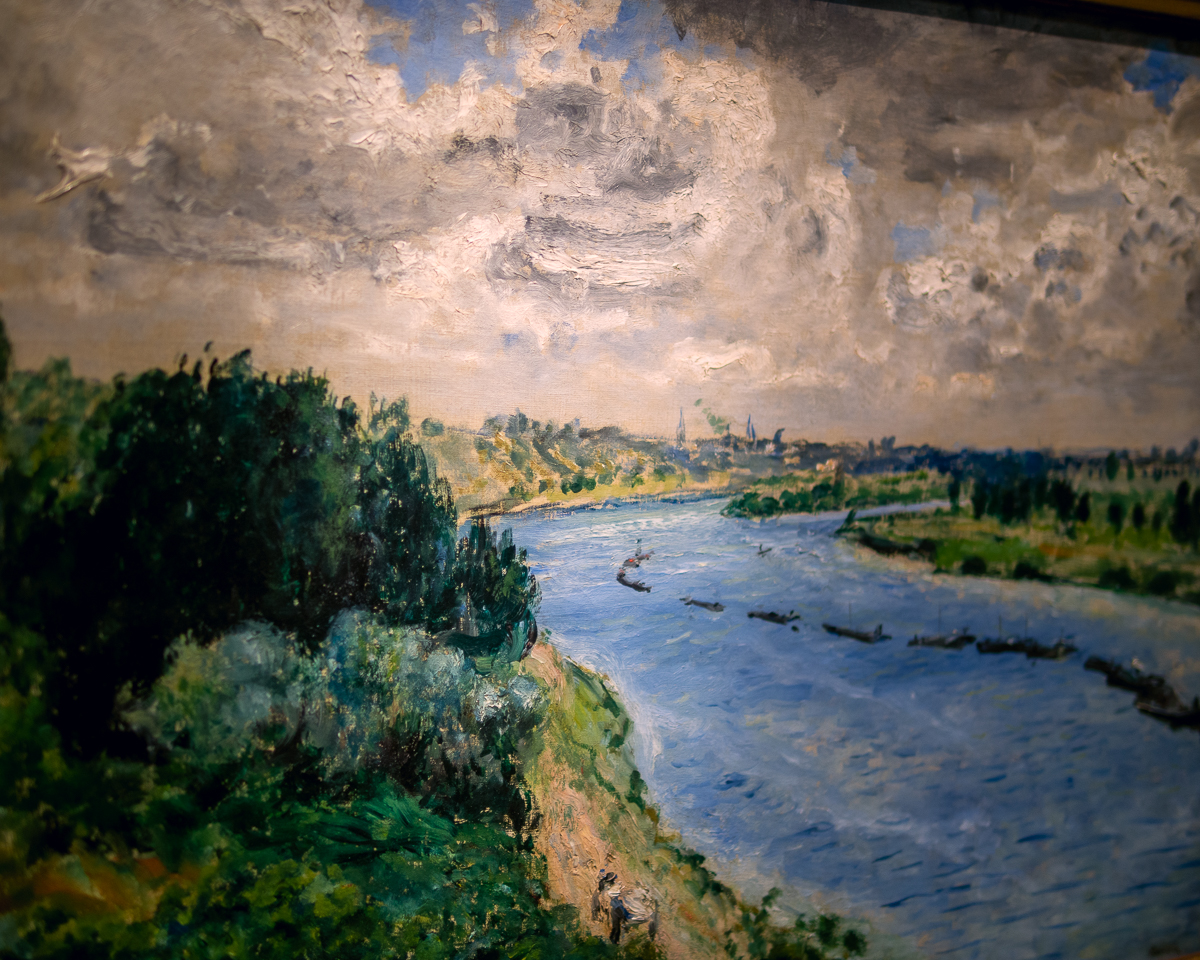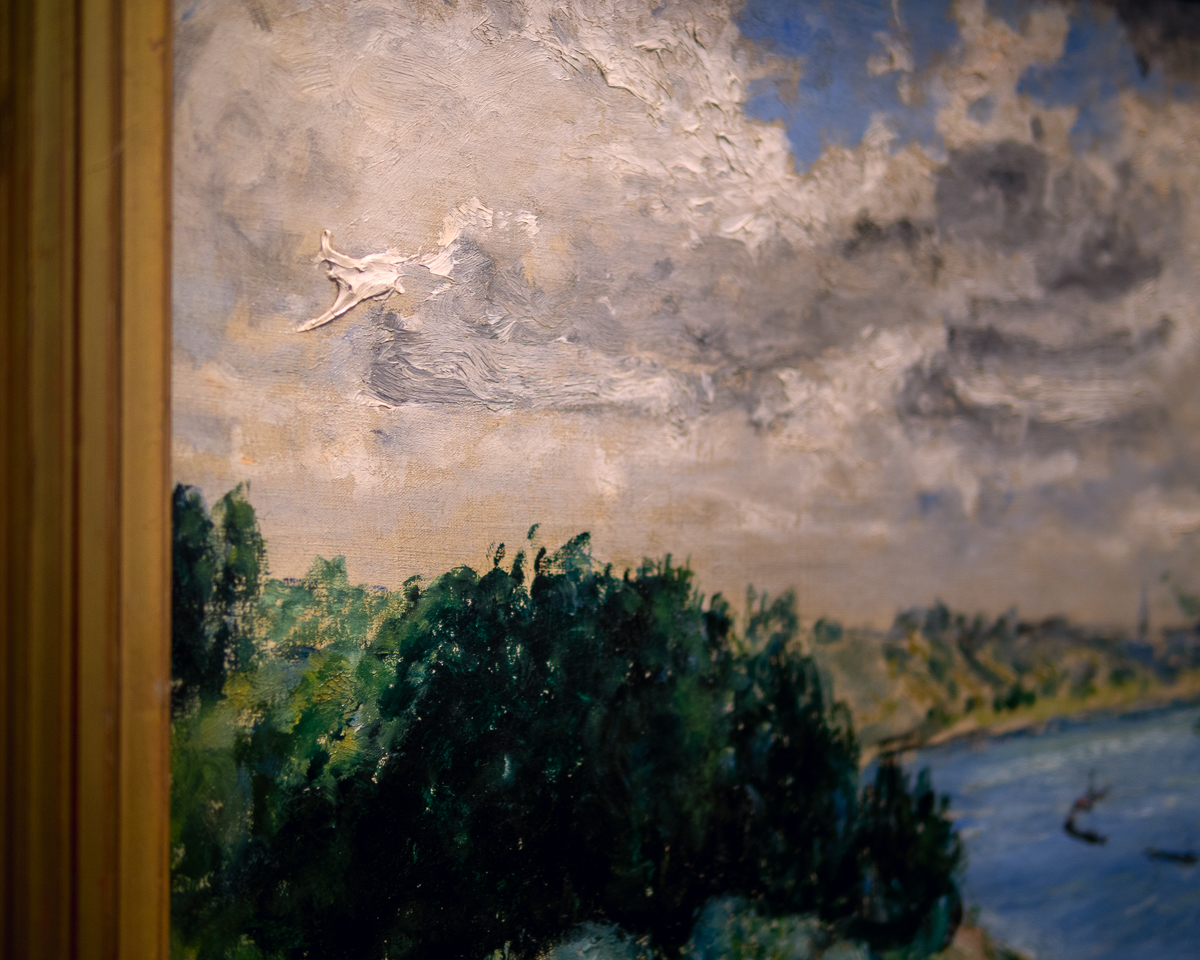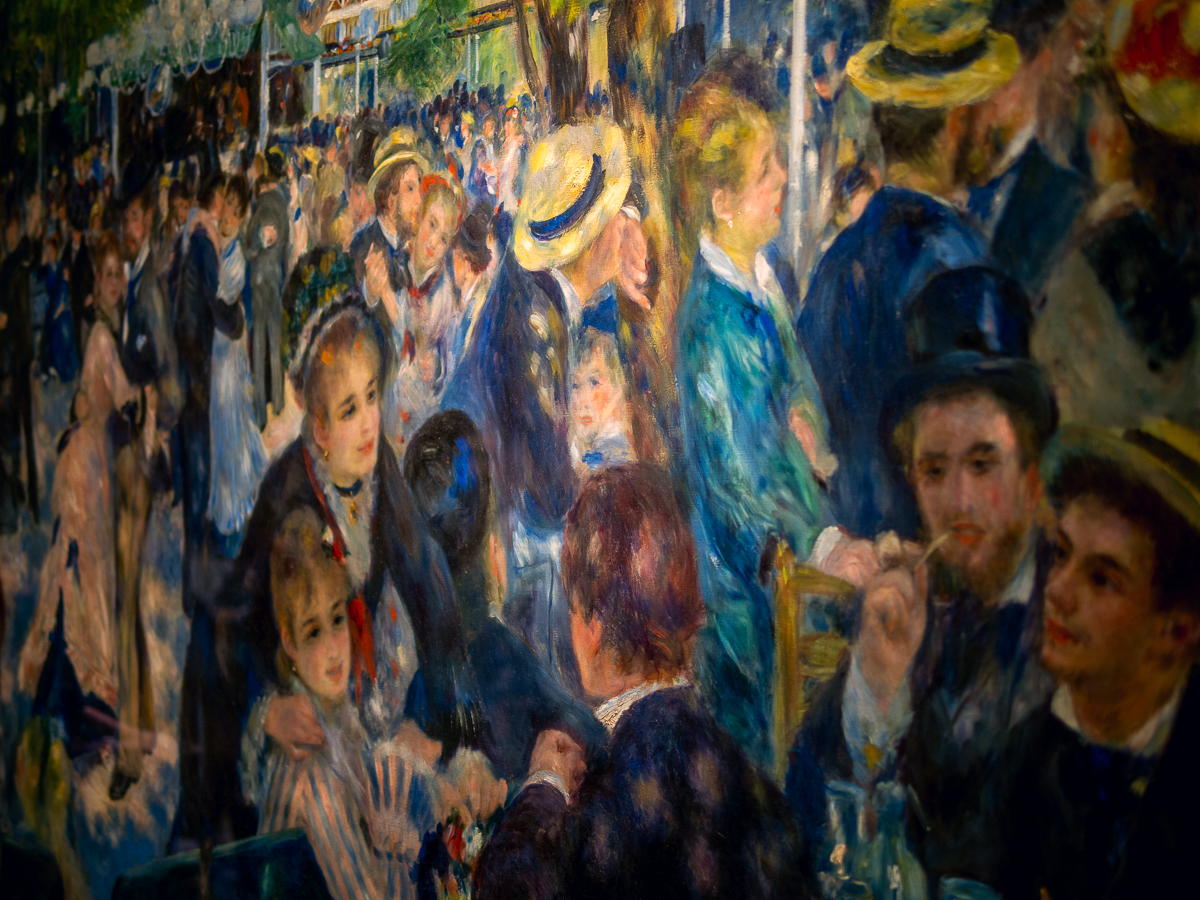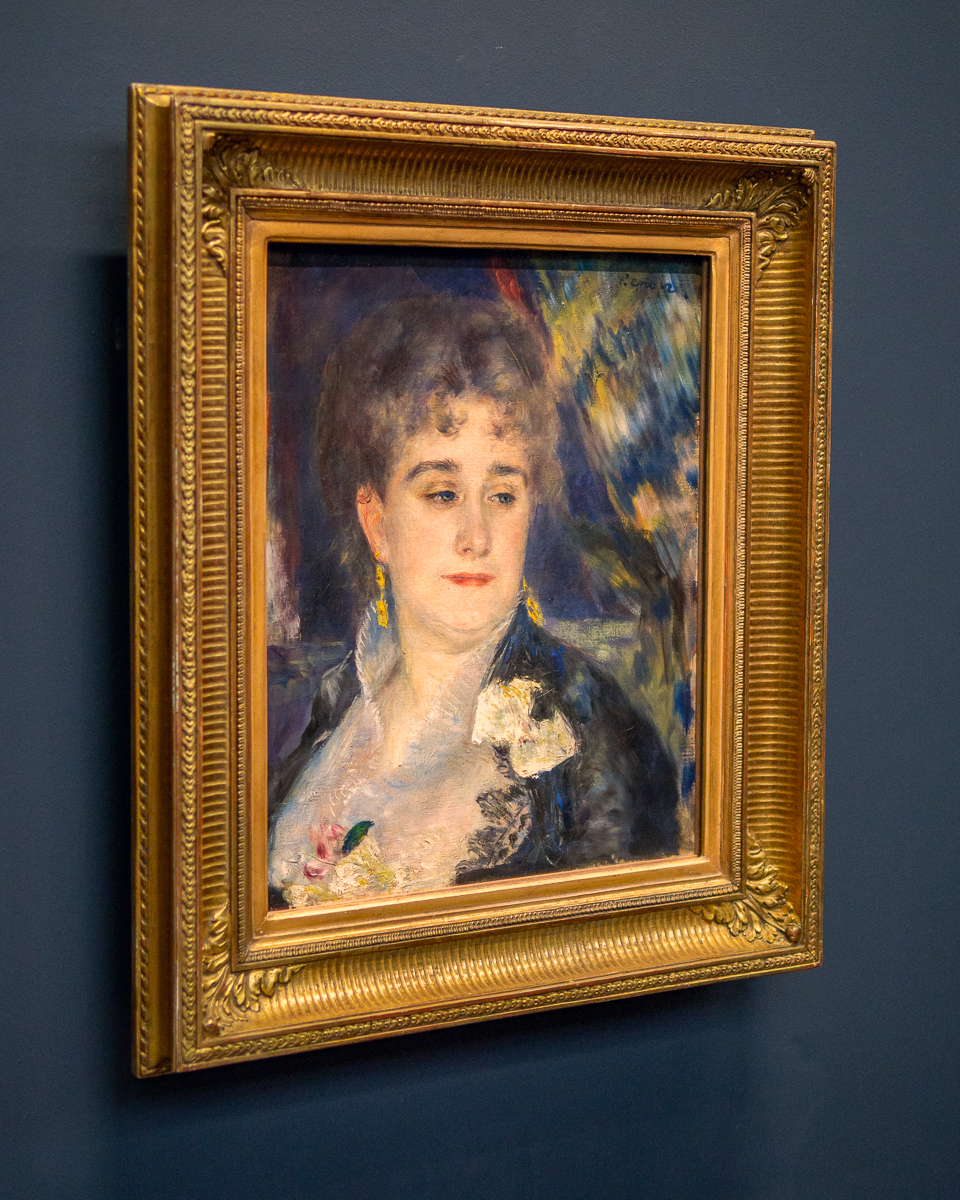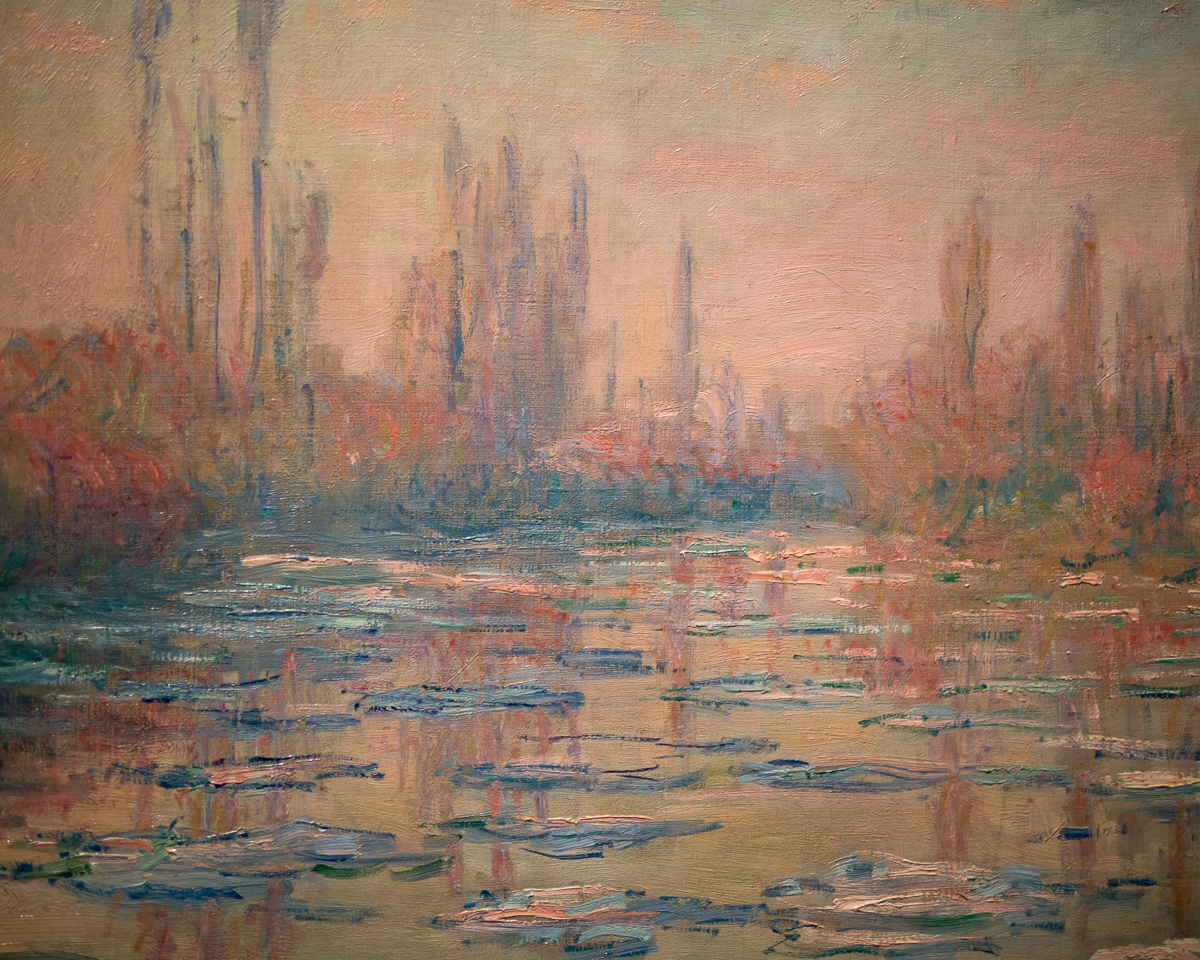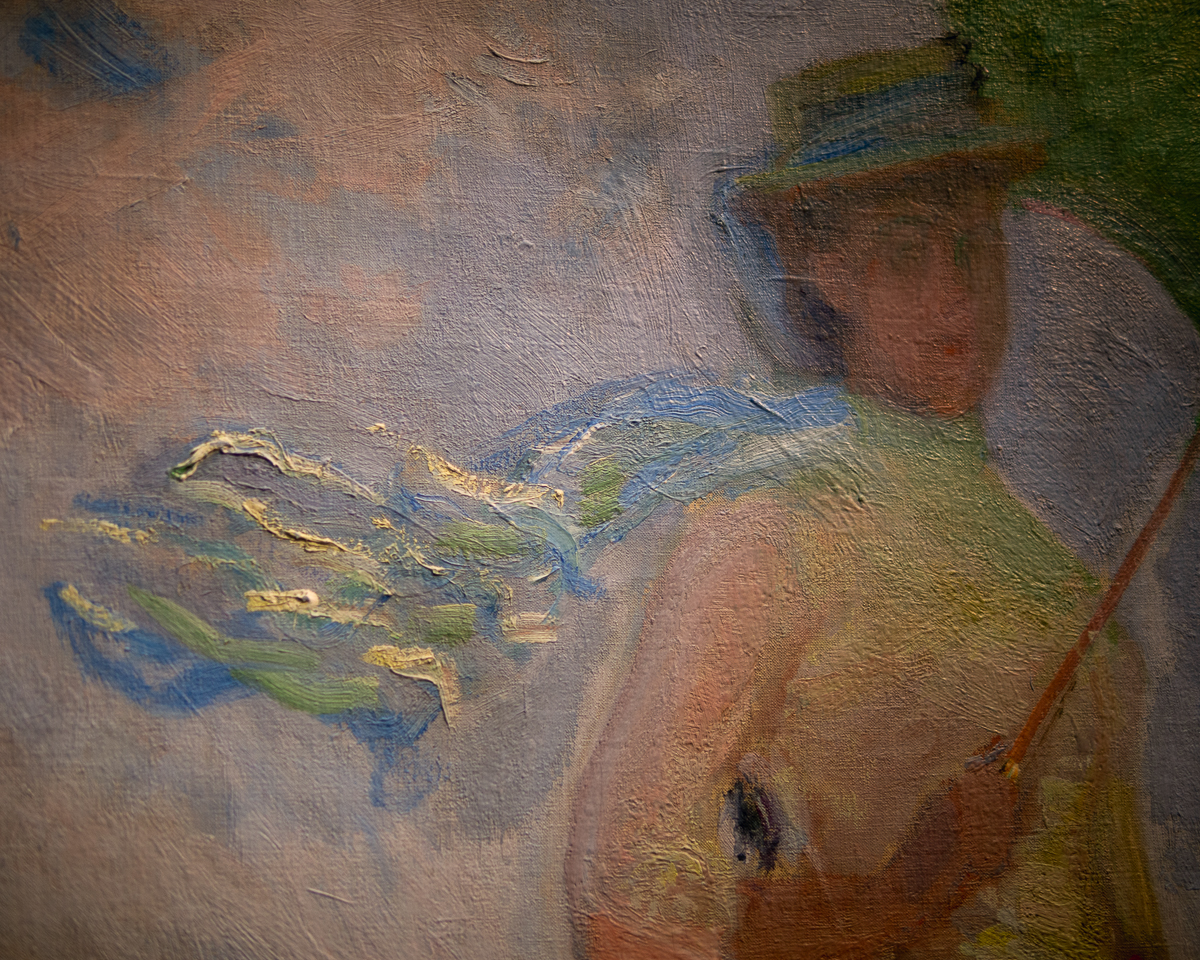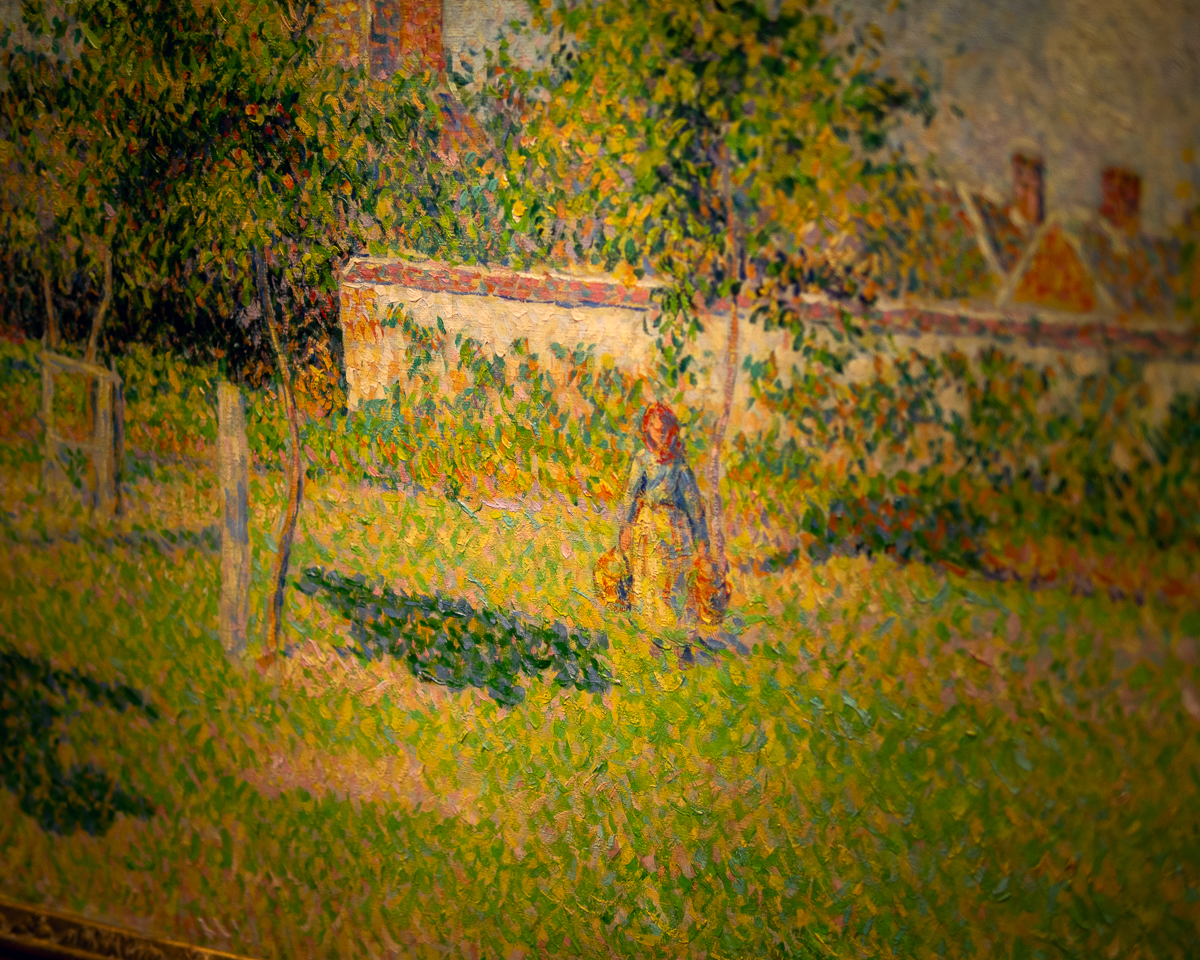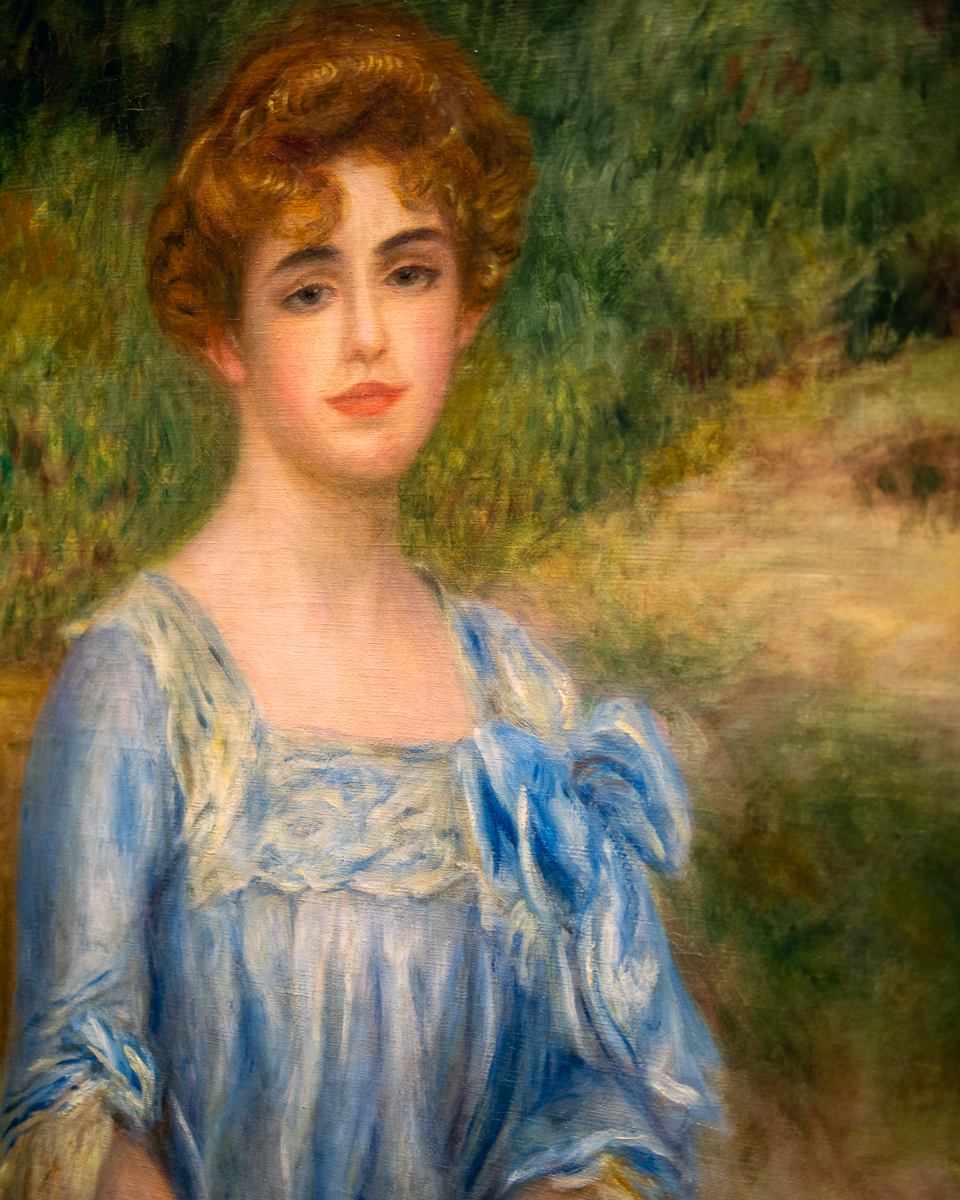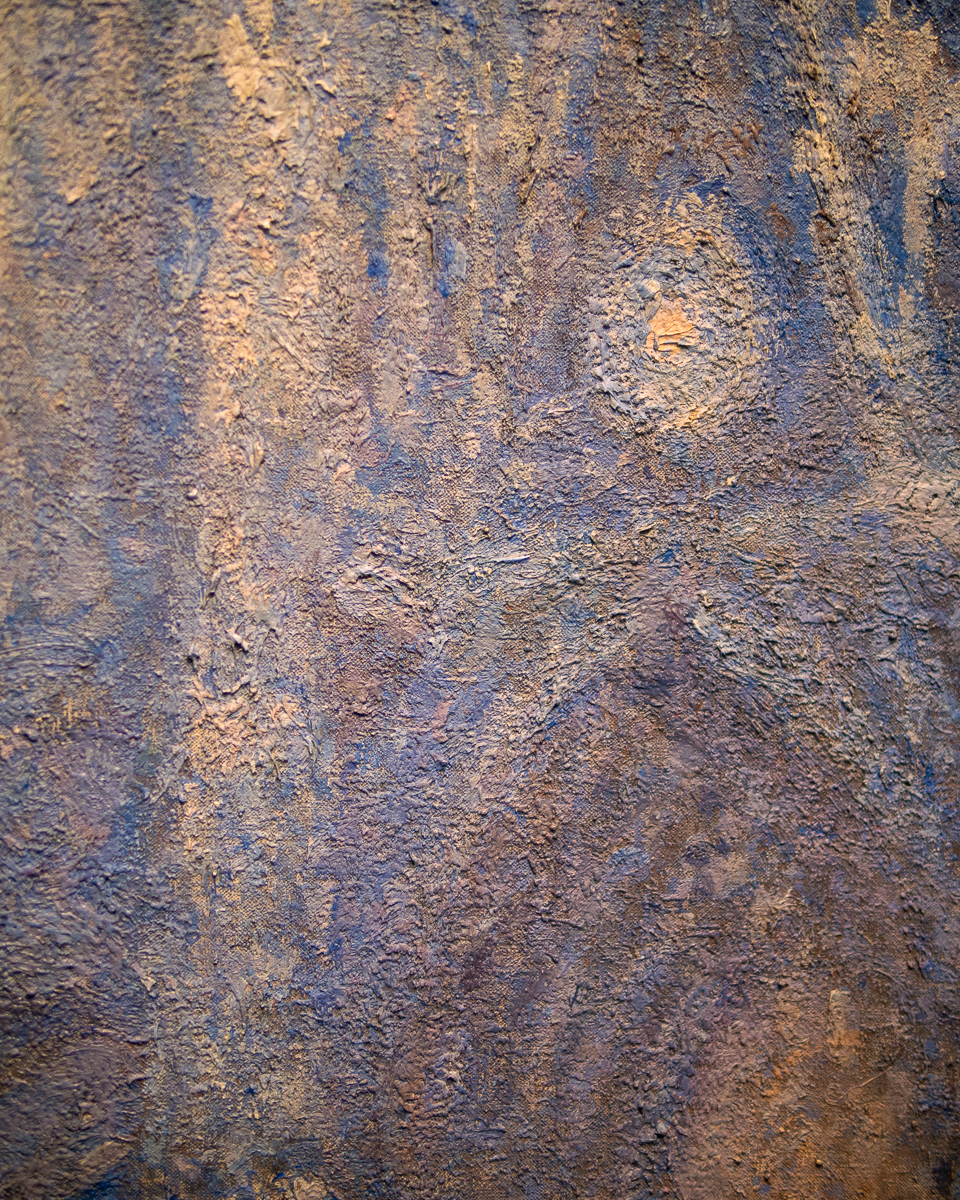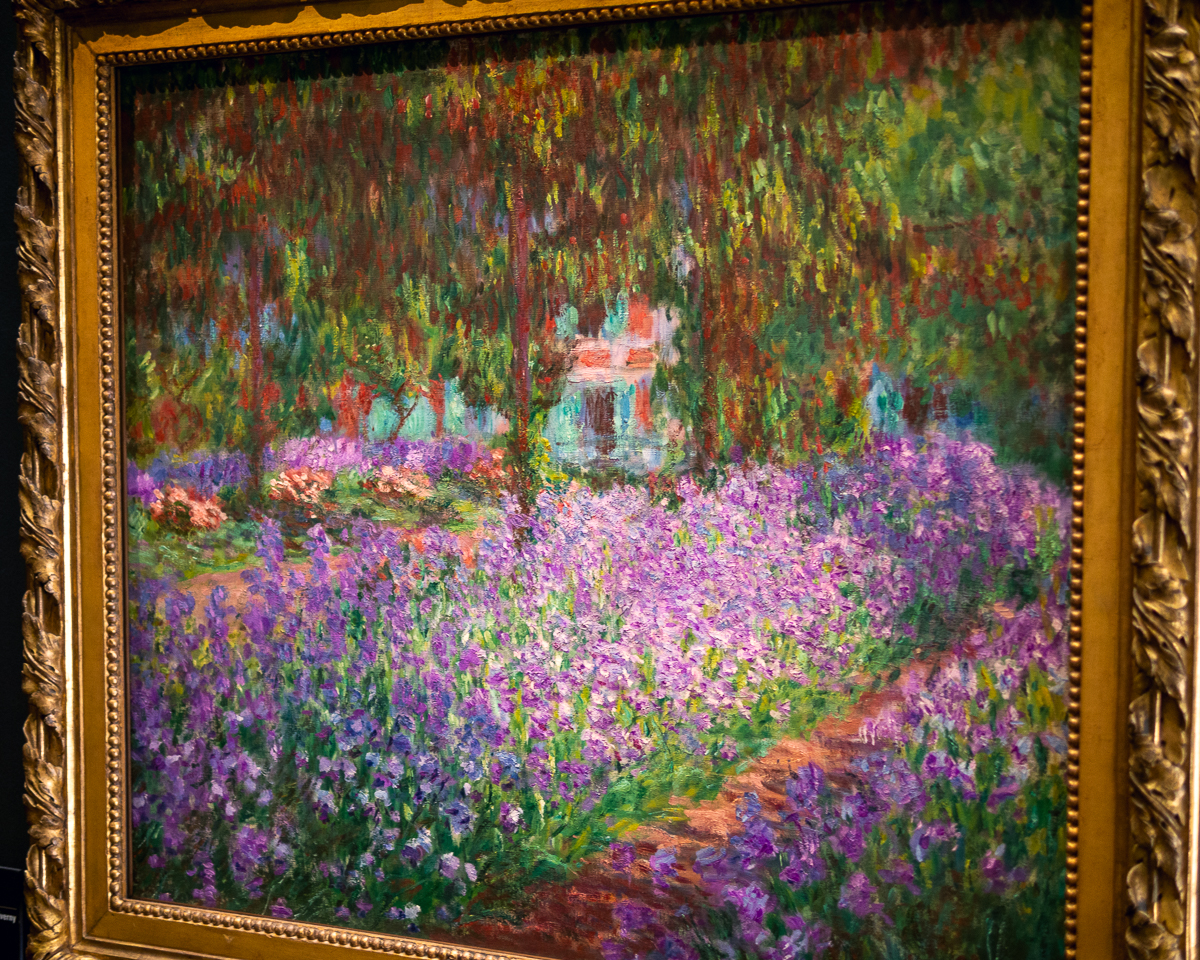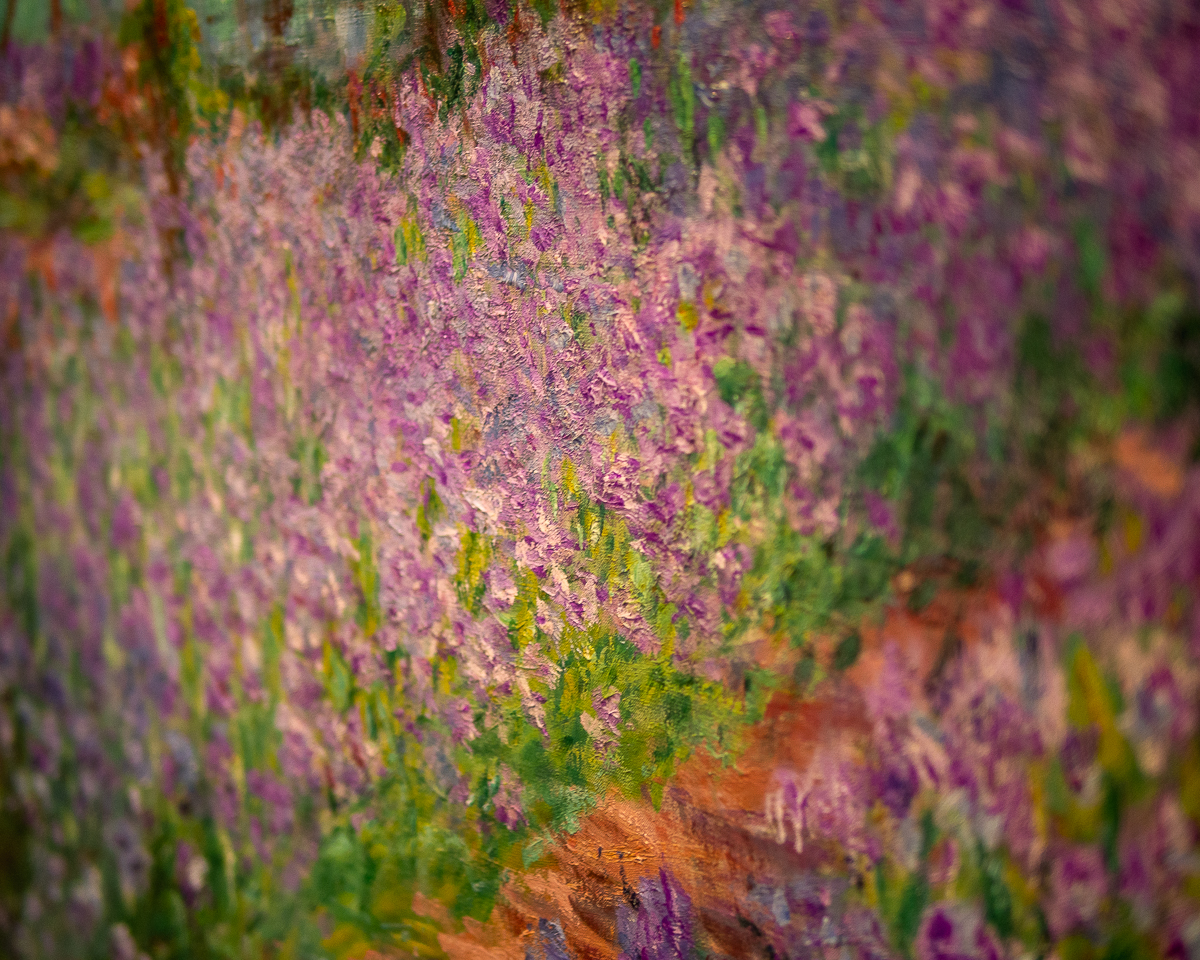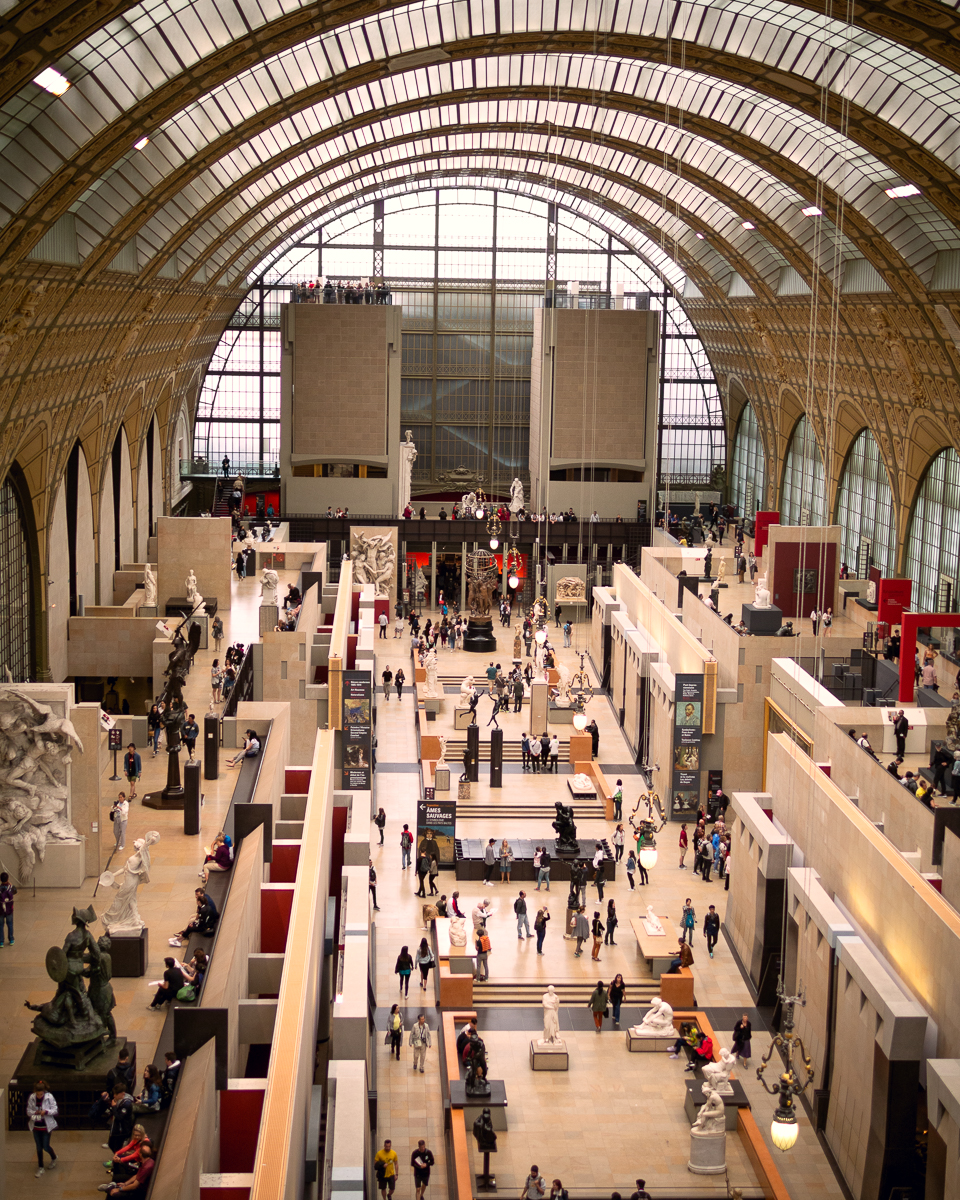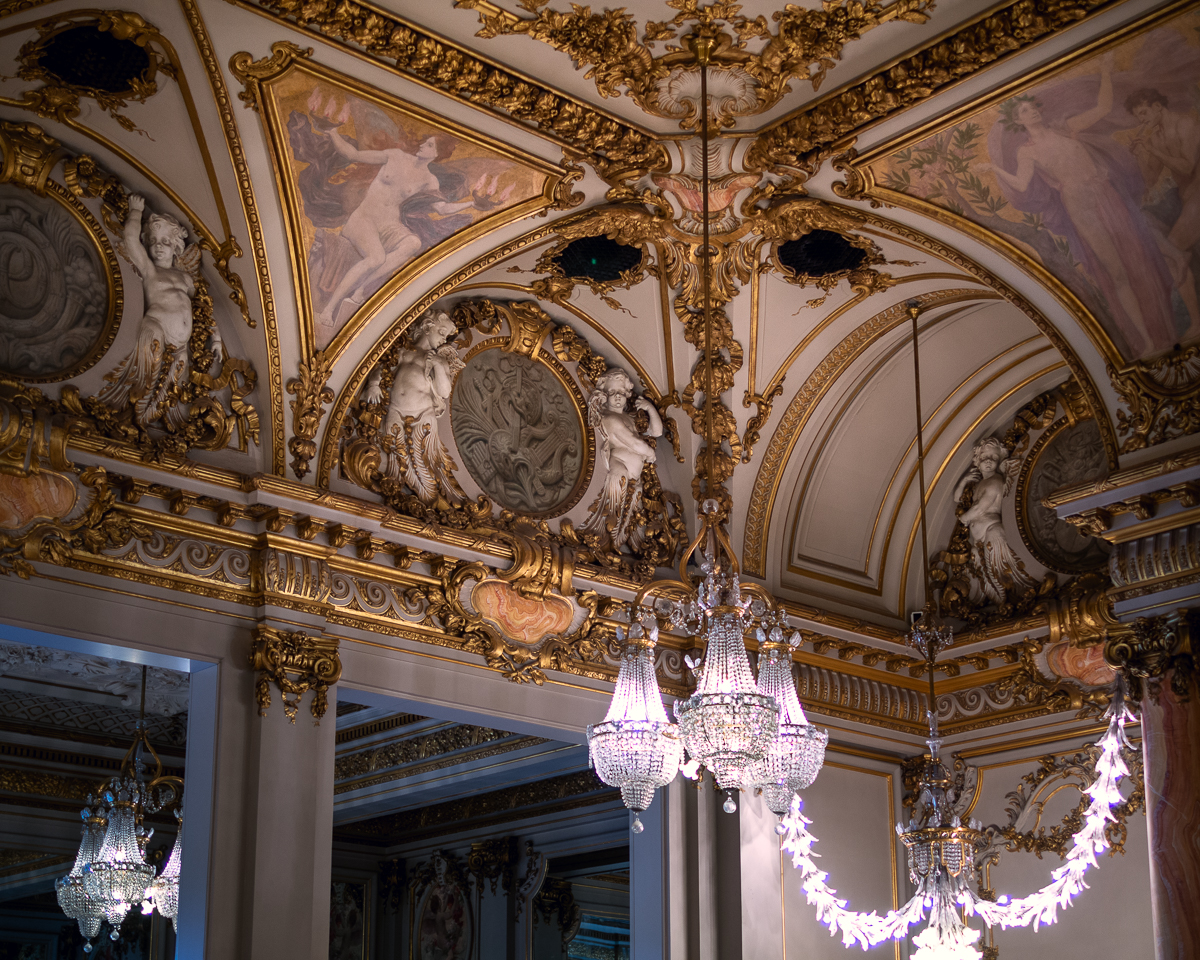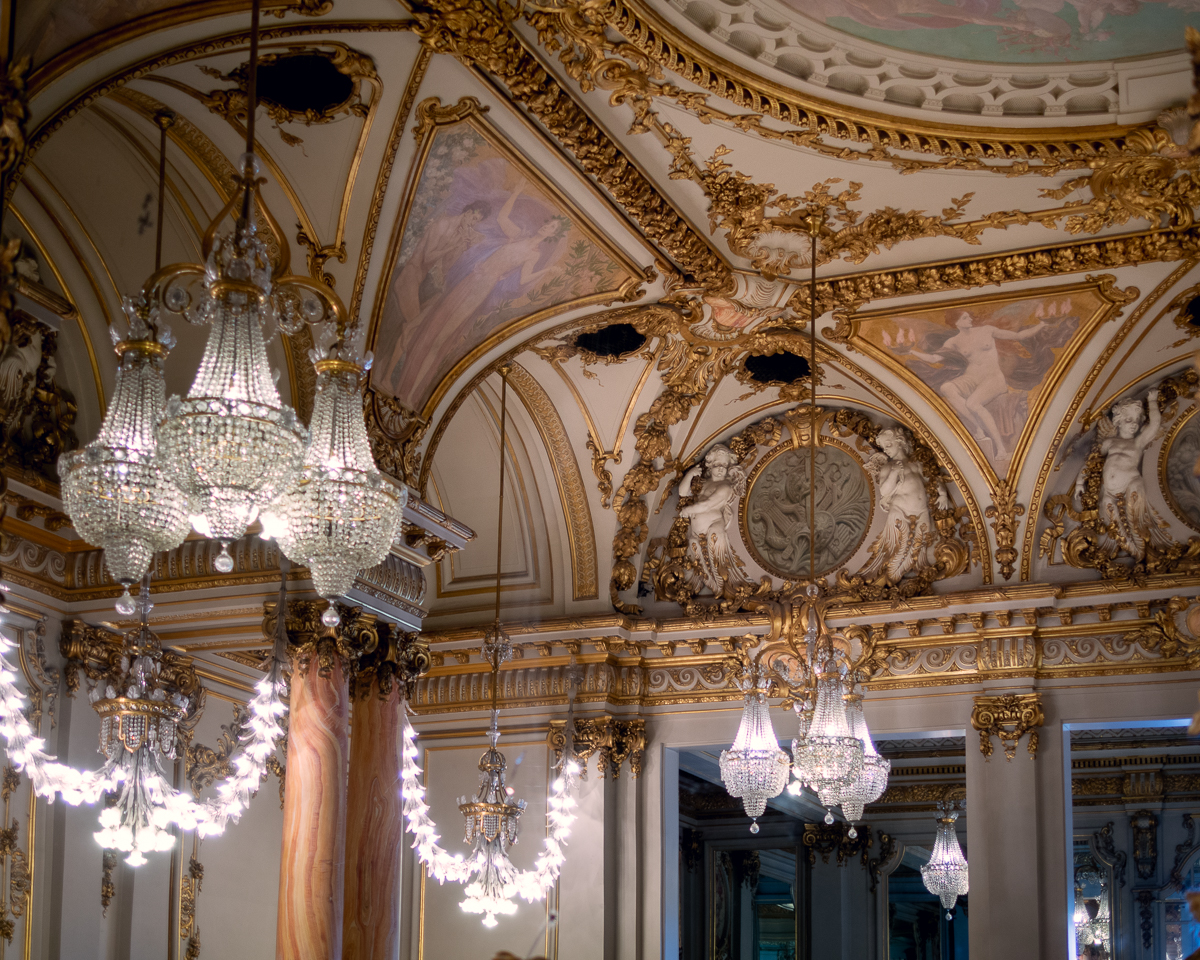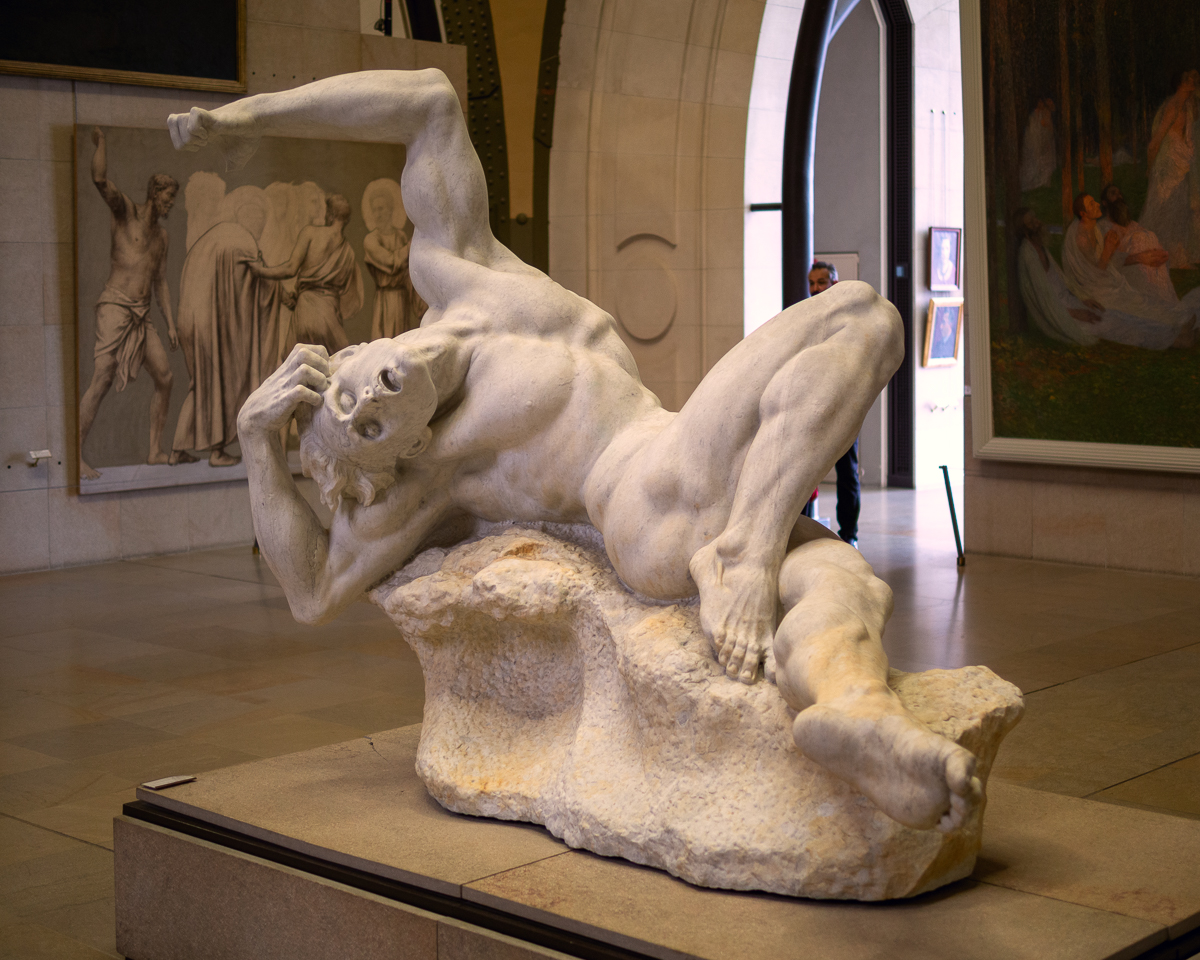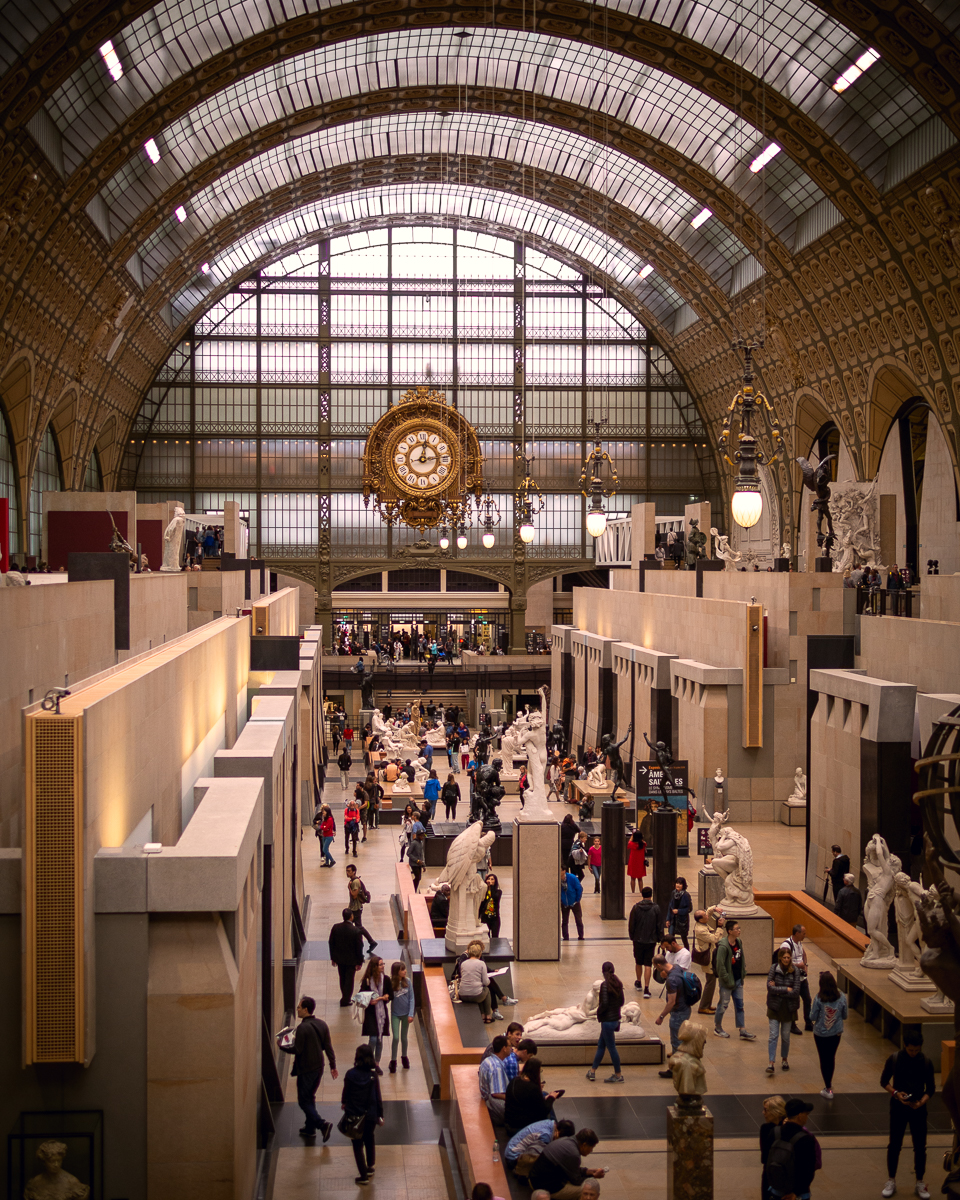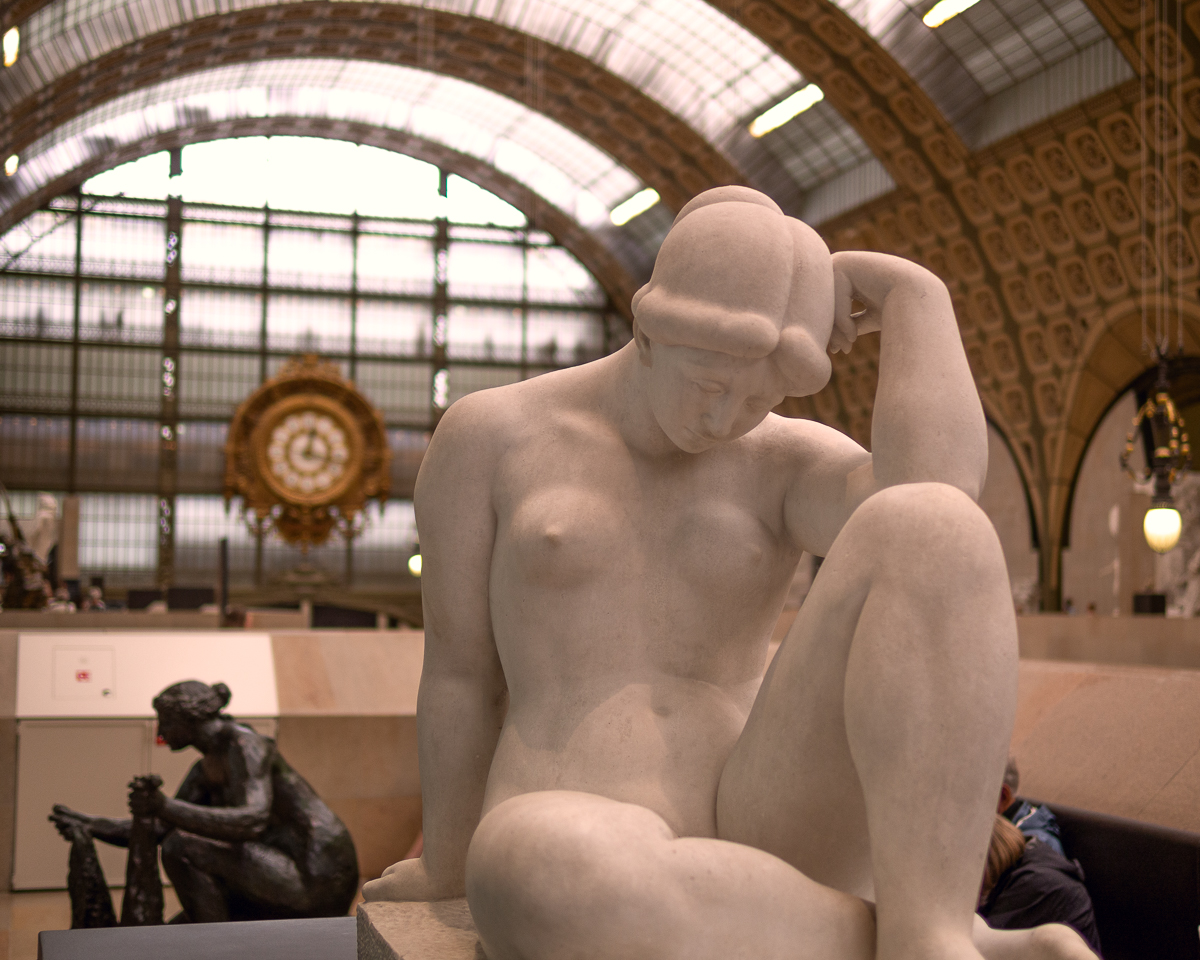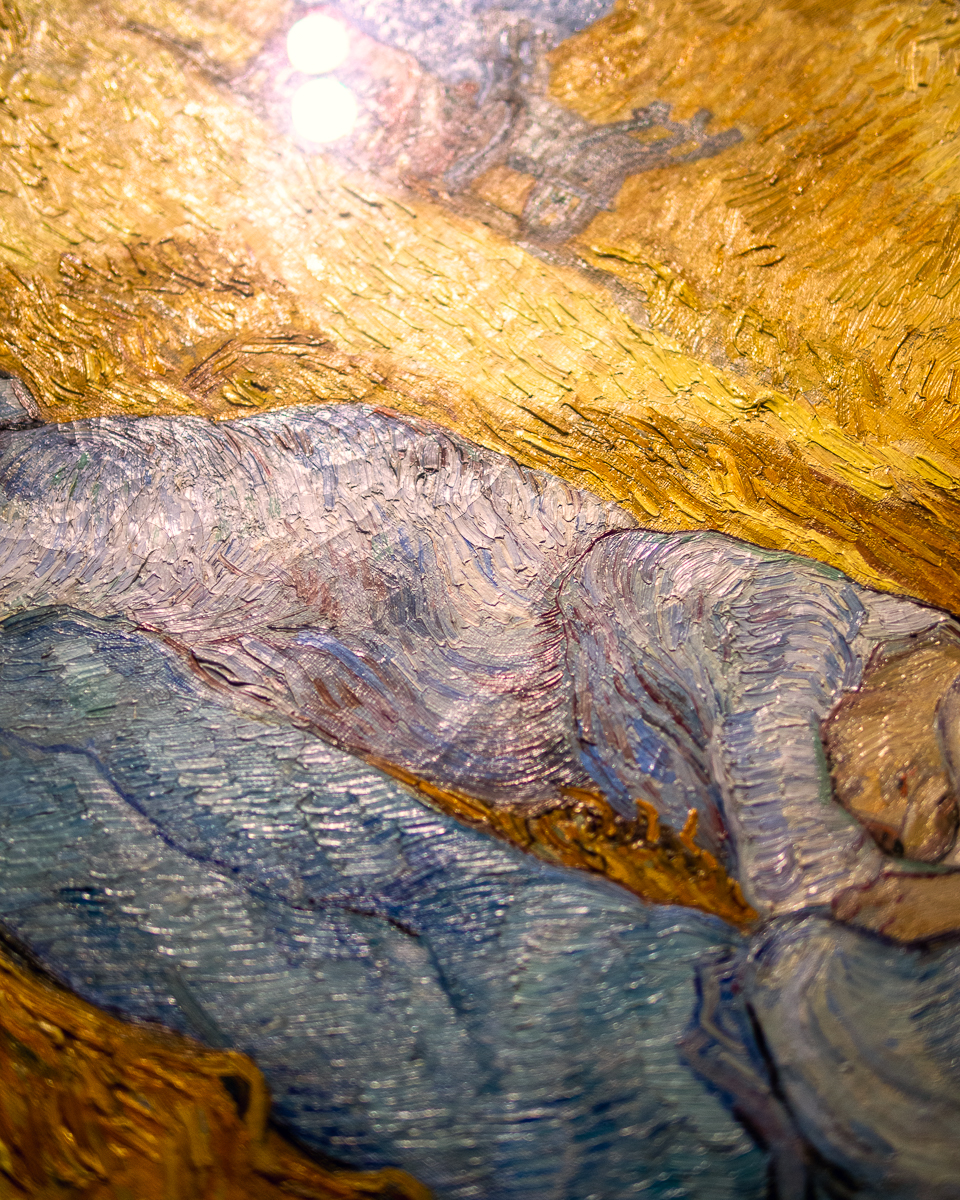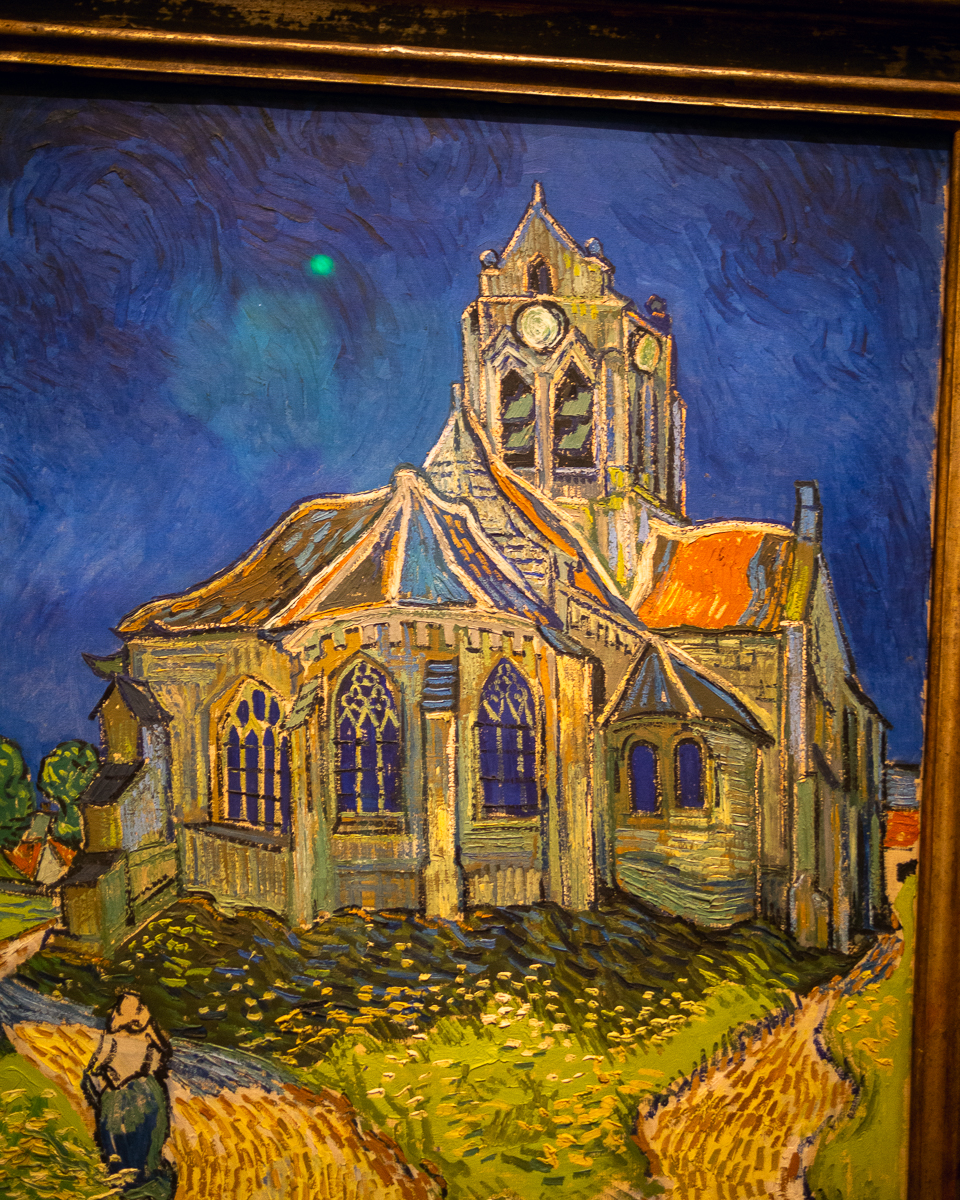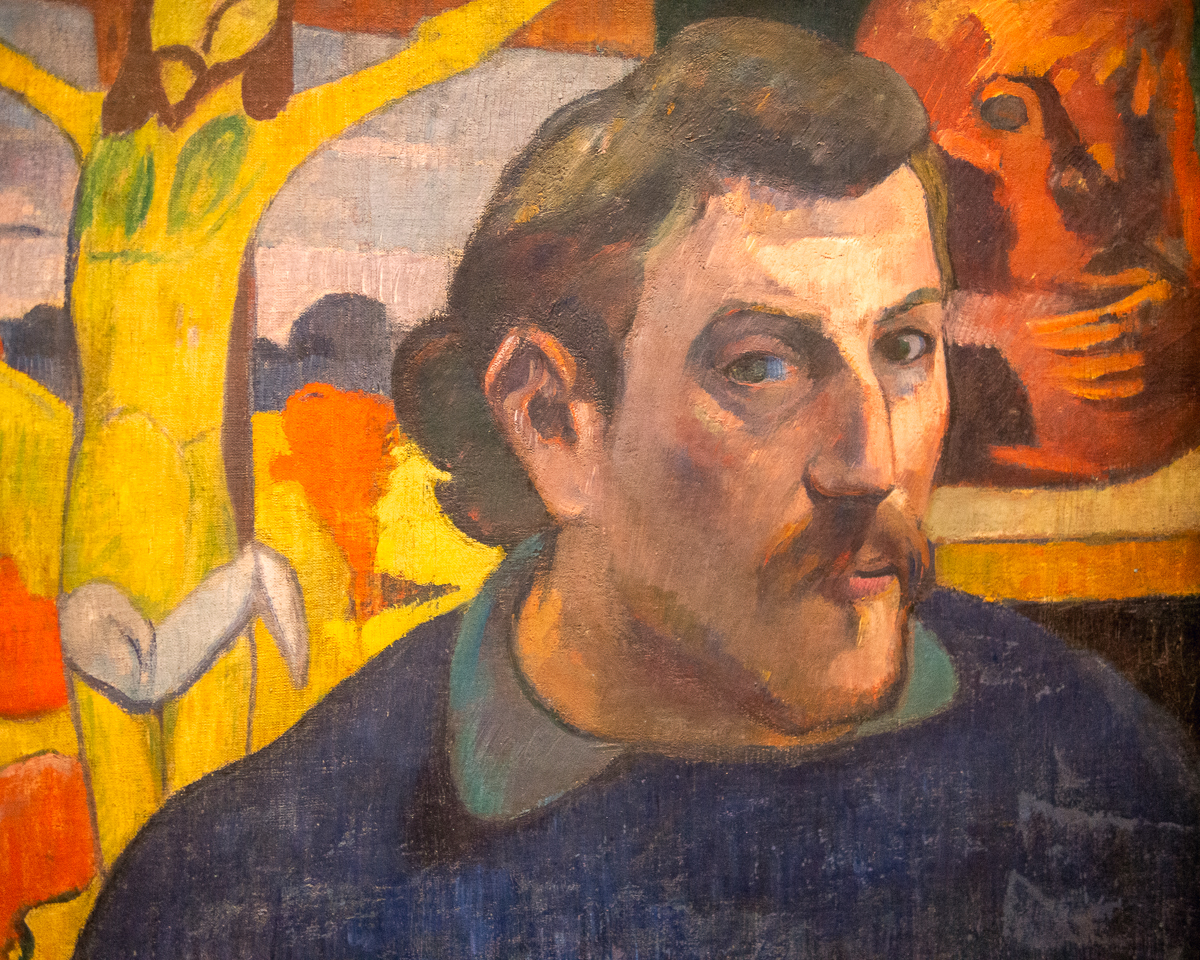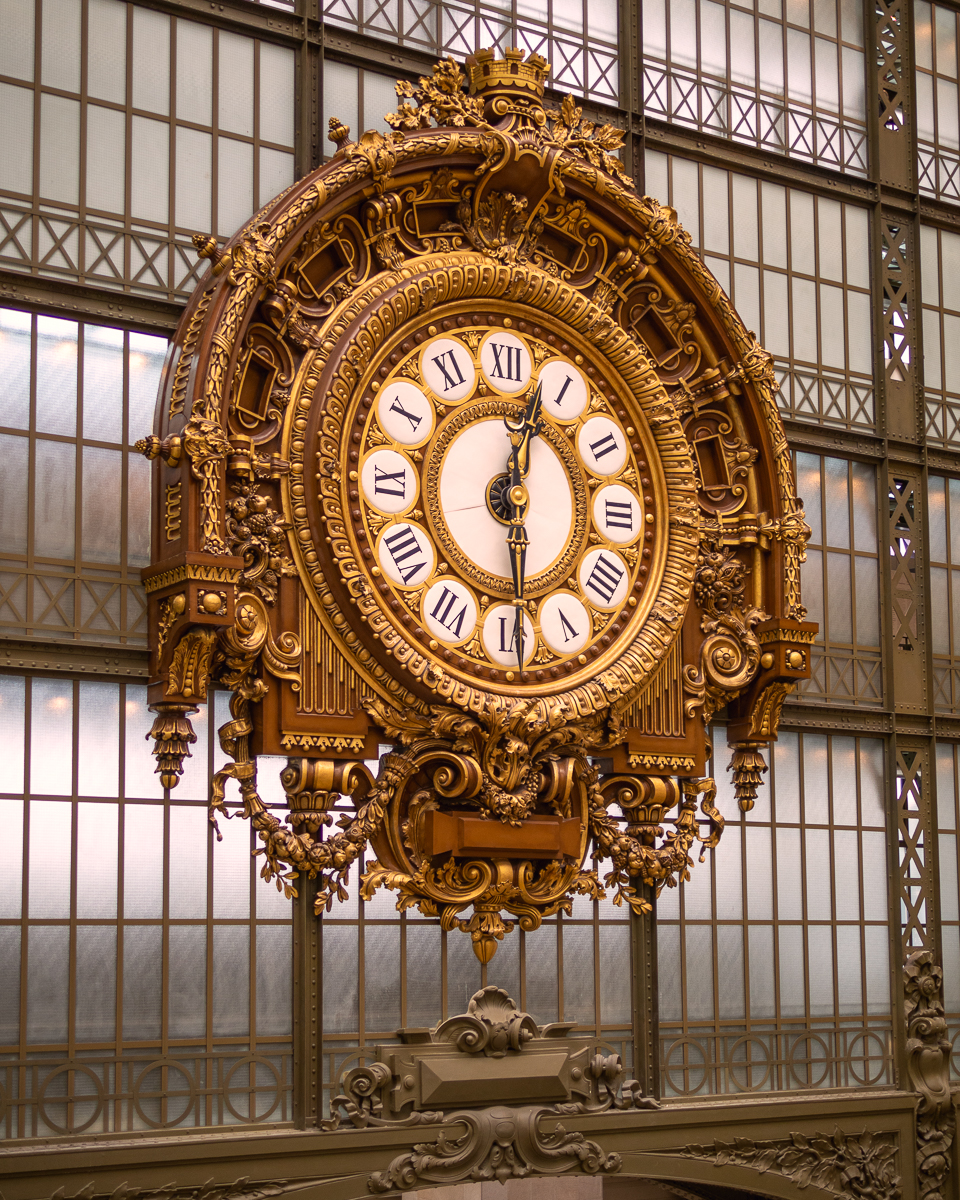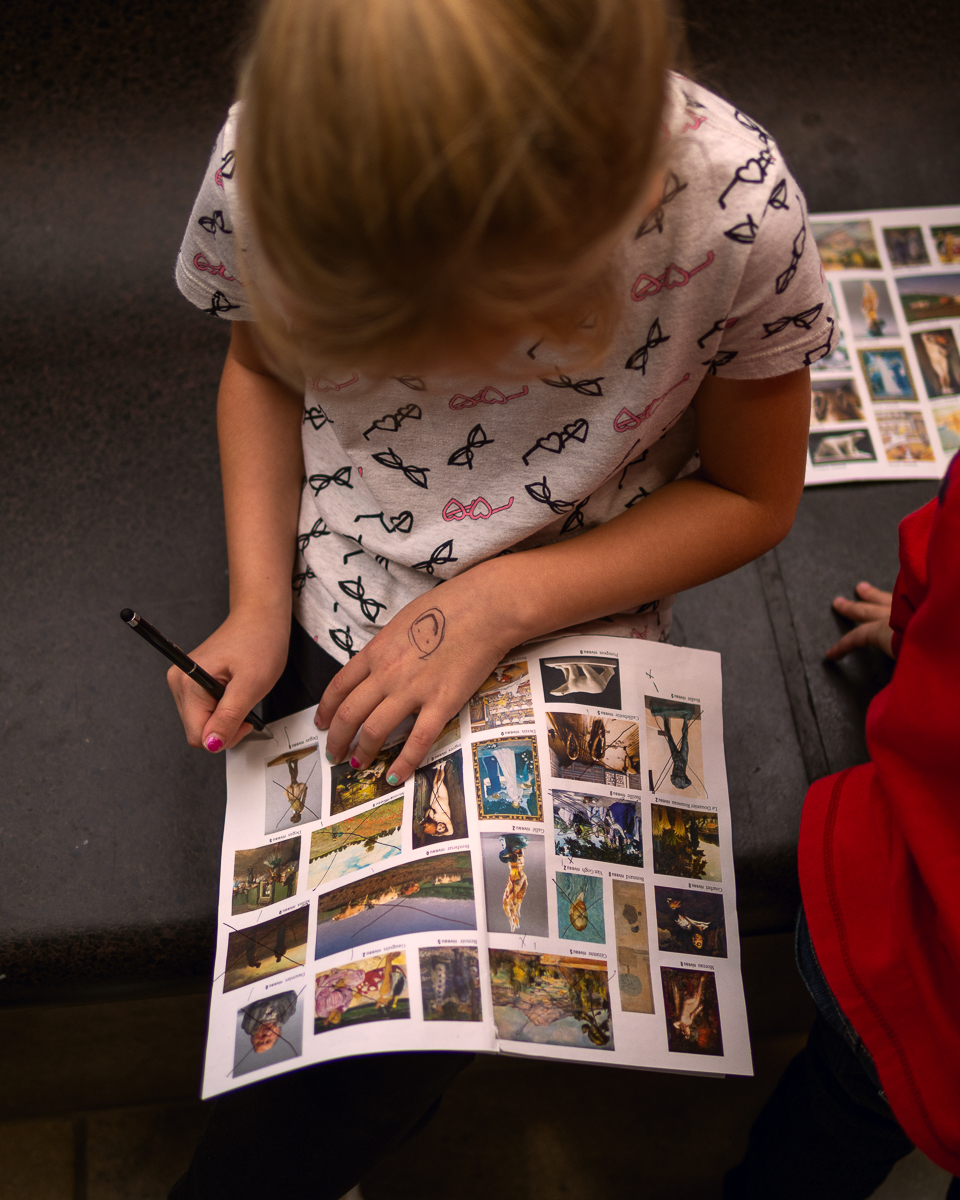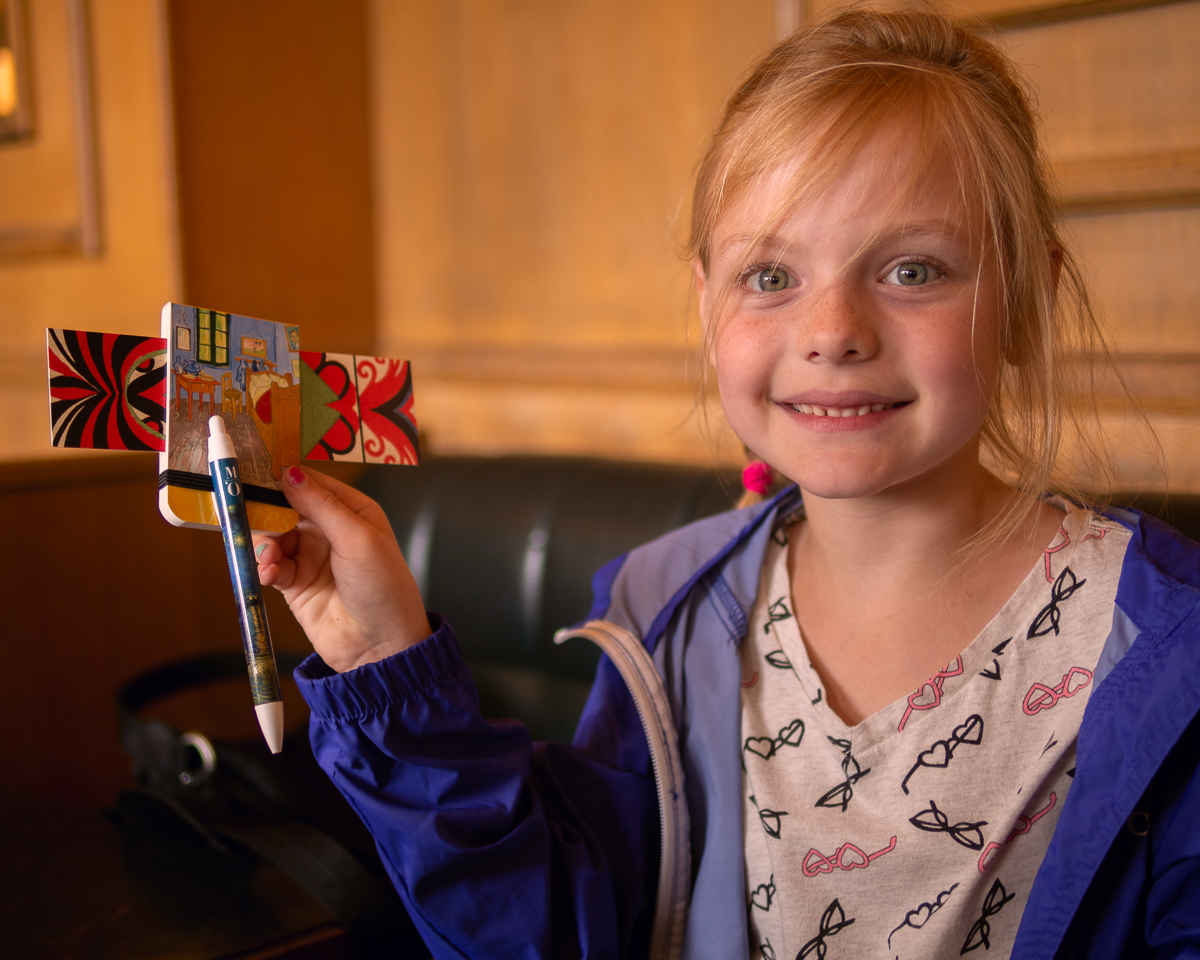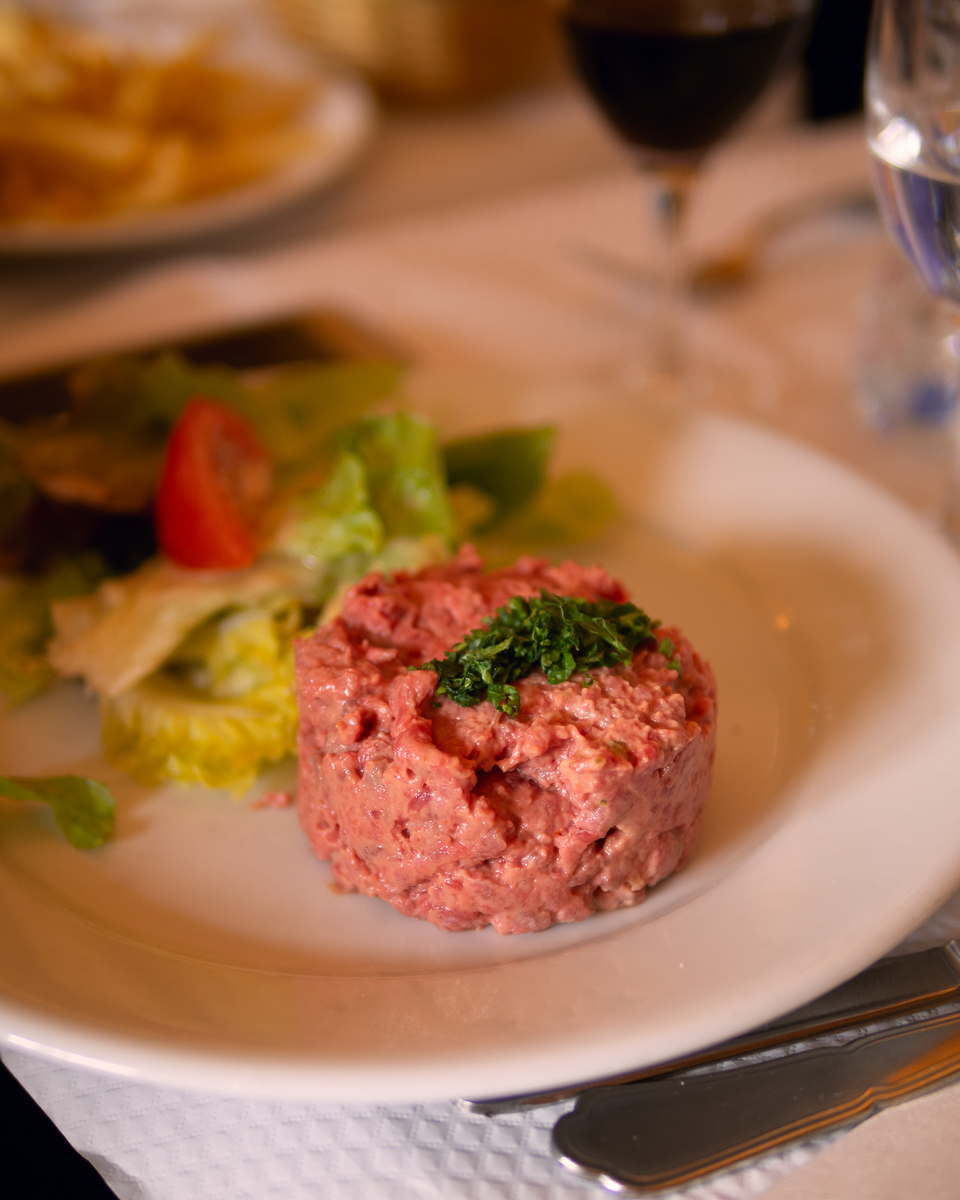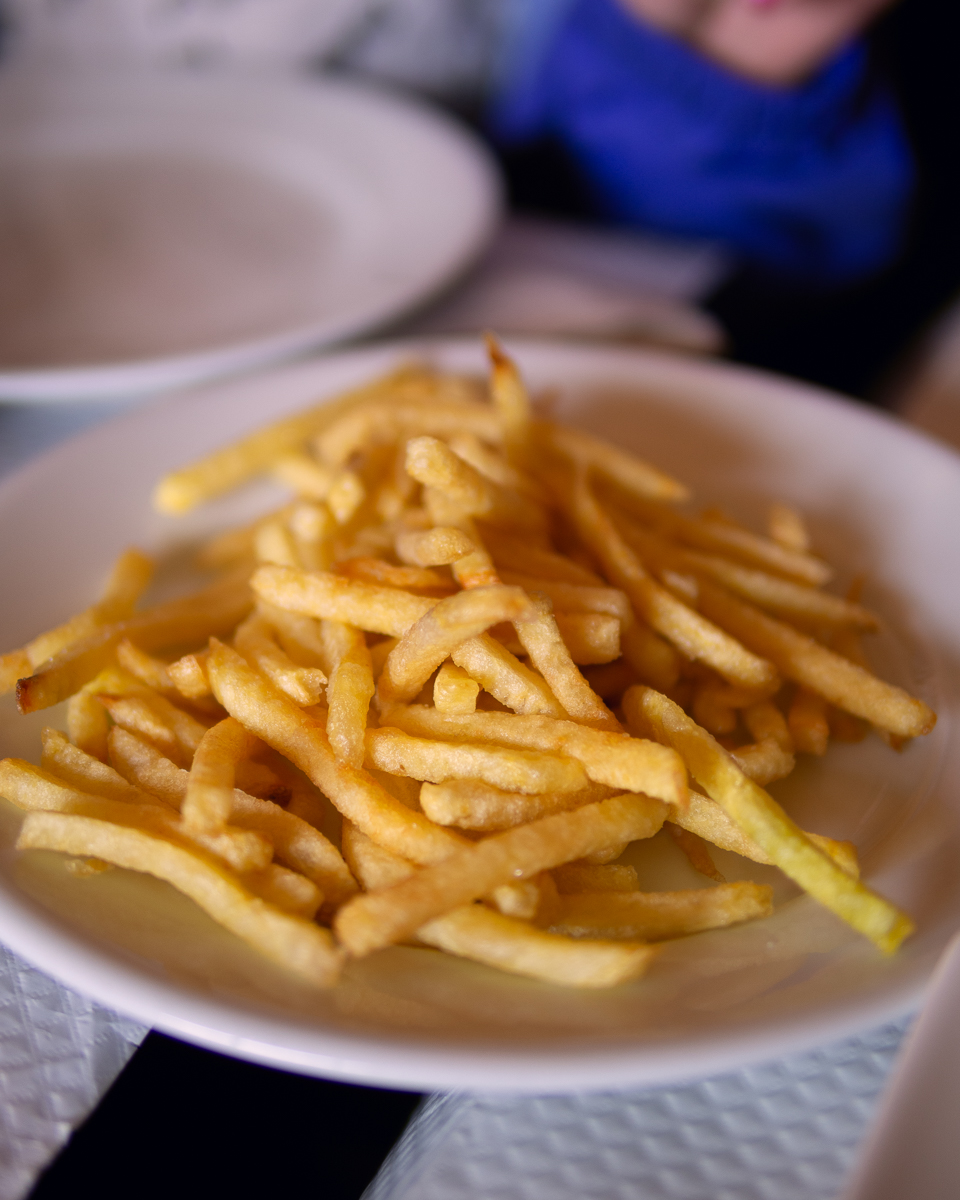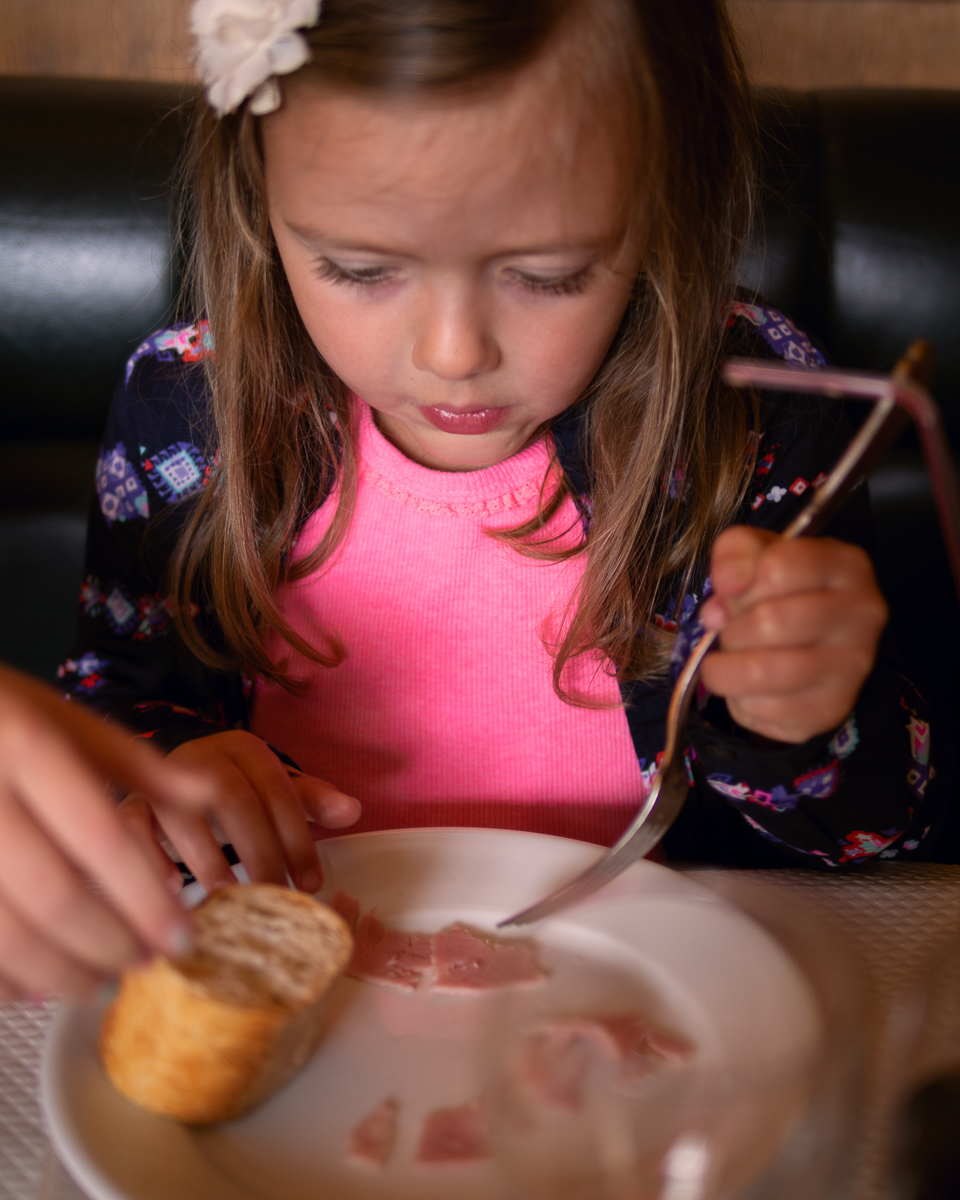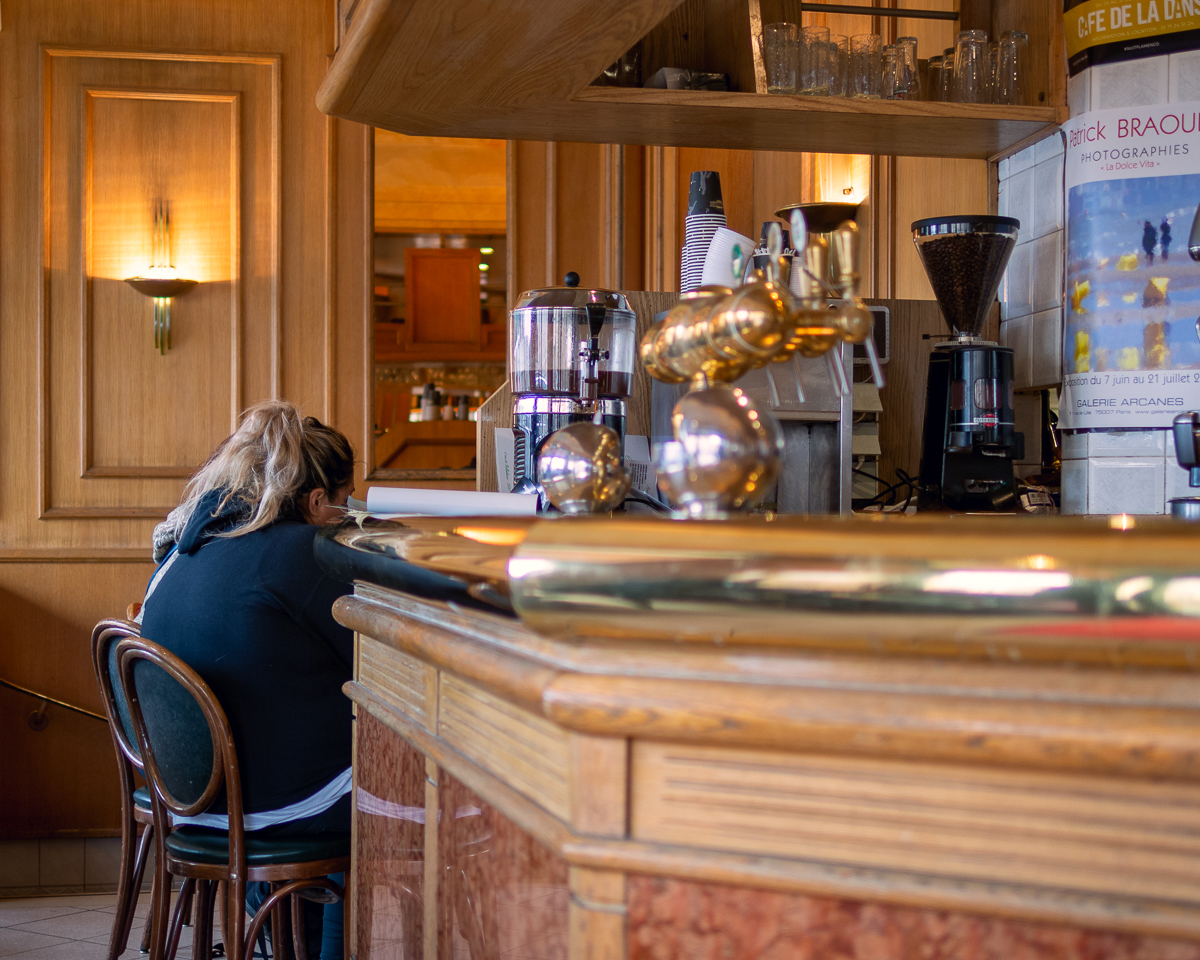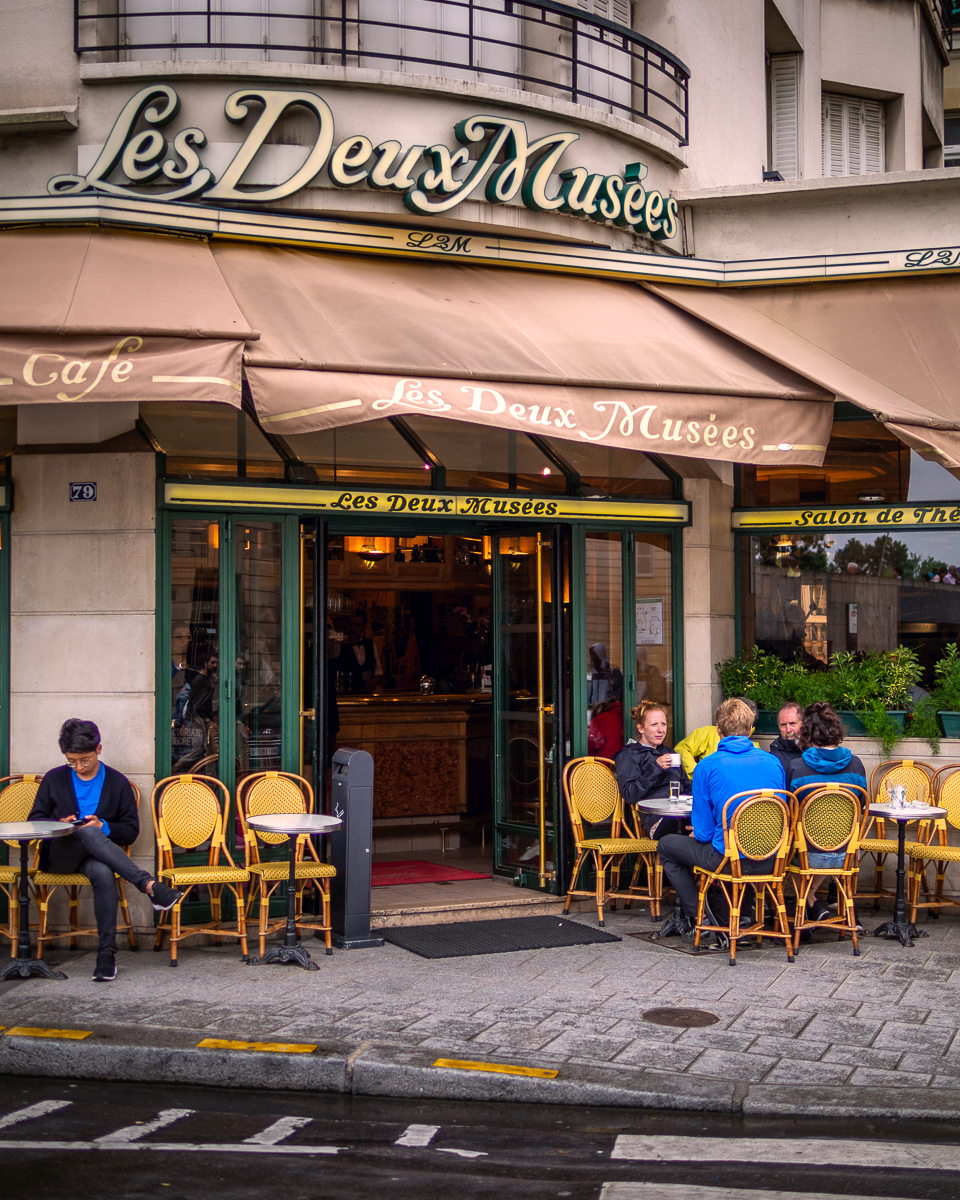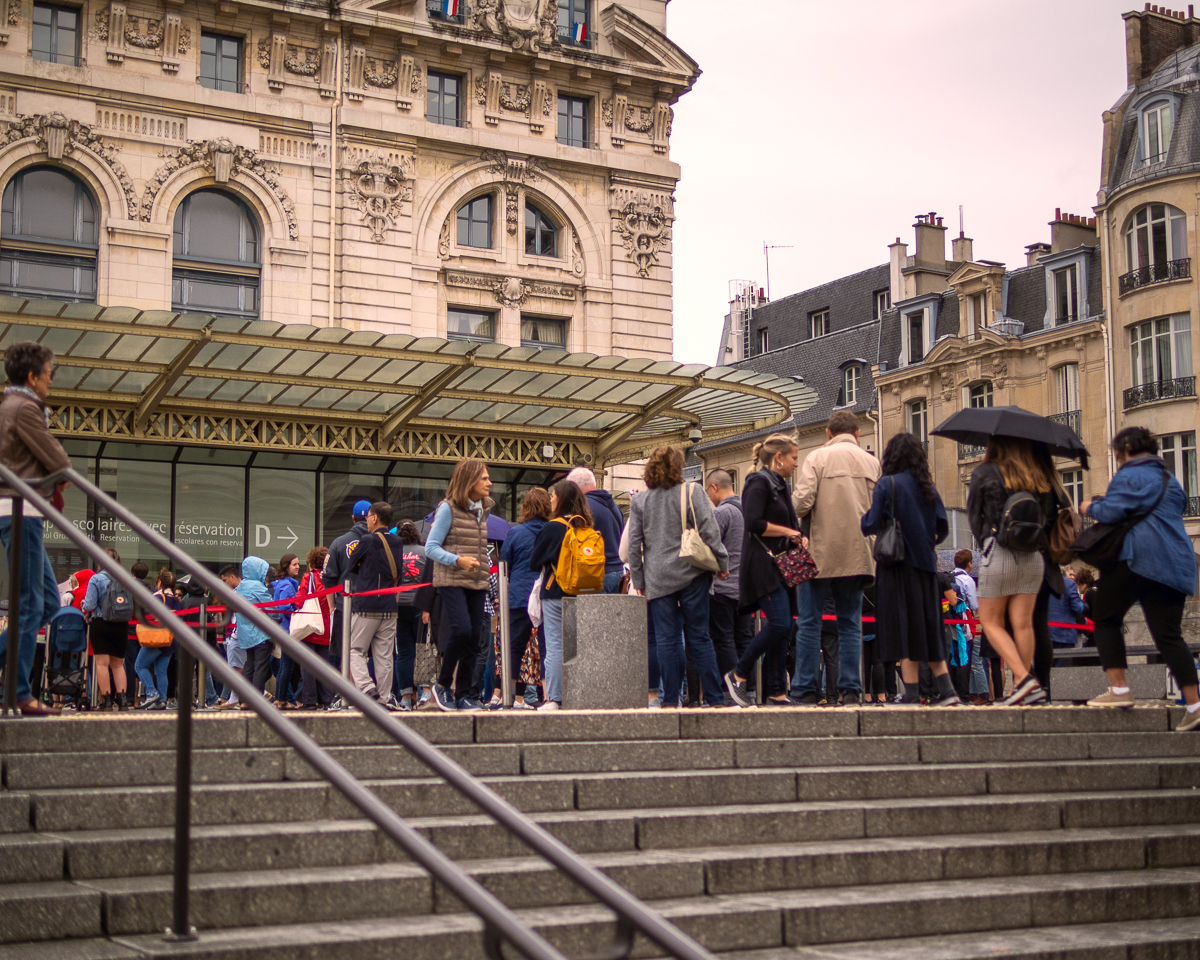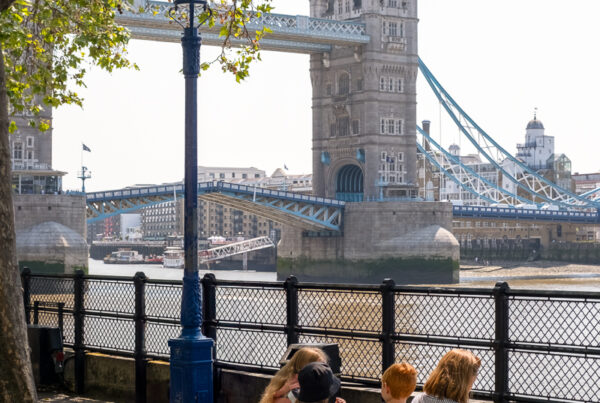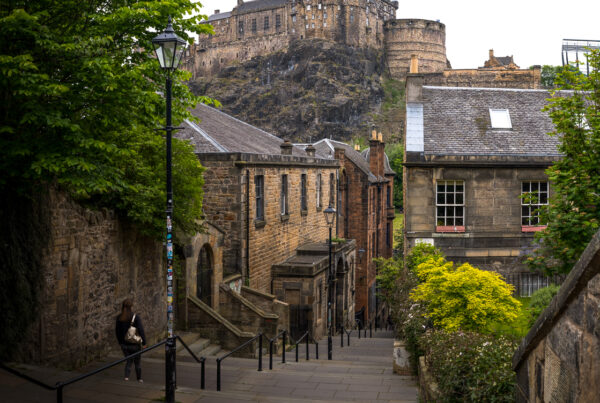Bobby looked down at the heavy stock paper in his hand and then quickly off into the distance, then back to the paper.
“I found one!” he exclaimed.
He thrust his finger out into the air of the enormous former train station terminal and toward a very large banner hanging from the ceiling. Printed on it was the oversized image of Vincent Van Gogh’s self portrait and an arrow pointing to a staircase. In his other hand he held an unfolded museum map printed with the same portrait. I couldn’t help but smile and ponder the humor in having possibly invented the most impractical hobby – Van Gogh spotting.
Nearly every lesson I learned yet about traveling with young children could be summarized by our time in the Orsay. I continued to keep expectations low and my mind open. In the end I don’t think I would have spent my time any differently had I been by myself.
While Lydia had written very little in her journal she did continue to read the pages about each location. For the Orsay her mission was to get a museum guide and check off as many art pieces as she could find. At the end she was to turn it in to us for a prize. This immediately piqued her interest. She looked at me with excitement as if to wonder what great prizes might lie at the end of a well-marked up paper.
Art museums can be a tough go for some people. And children, with their low attention spans, are particularly susceptible to disillusionment. My goal was to simply get through it without turning them off to art. I wanted to encourage them to engage with the artwork without overbearing lectures from me or a guide or giving them any sense of being held hostage or any longing for a playground. I wanted them to be able to explore freely, in their own way, but still have a meaningful relationship with the art. I also wanted to promote open discussion – even free-association of thought. It takes a lot to fully understand art. It requires deep knowledge of time and place, the impact on the community and the artist’s personal biography. But just as vital are the most primal emotions that art stirs in all of us. Simple questions like “what is going on in this painting?” and “how does this painting make you feel?” This is a perfect avenue for children (or anyone) to approaching art.
In a stroke of good fortune, the Orsay had an ideal museum guide for our activity. On the front of the large, unfolded paper was the floor by floor map of the museum. On the back was a collection of 20 or so images of its most celebrated works – an impossibly small limit to achieve. Unexpectedly, the twins jumped and clamored beside Lydia for the booklets in my hands and Amanda dug deep into her bag to procure pens. Their excitement for the mission was an unexpected and a wonderful surprise. Bobby was extra animated as thought he had taken the early lead when he spotted the Van Gogh banner.
Over the next two hours the children darted about, their heads swimming with oil paint and white marble. They sat, and sometimes laid, on the floor at the foot of world renowned masterpieces checking, scrawling or scribbling its mirror image on the paper. A surreal picture indeed. Often they would point and comment on the subjects of the paintings. “There’s the one with the cows” or “I see the one with the red flowers.” At times I would slide in and offer a nugget or two of information if I had it or a question if I didn’t.
After a full hour, and sufficiently fulfilled with the satisfaction of art, we entered the Impressionist rooms. Justifiably our museum experience was elevated to new heights. Manet’s pioneering strokes provided inspiration for a world-shattering movement. Monet’s prolific and universally recognizable works from calendars to coffee mugs donned nearly every wall. Each painting, infinitely more impressive than any other novelty reprint I’d seen. It was a veritable who’s who of names synonymous with inspired beauty and talent. Degas, Cezanne, Pissaro. And some lesser known names like Sisley, who rightfully deserve to hang with the greatest masters of the era. Renoir grabbed me as the most surprising standout. His brush strokes propelled the genre to bold new places enshrouded in dreamy softness. Pungent floral blossoms revealed in flickering dappled sunlight. The dabs of paint were mesmerizing and hypnotic and induced in me waves of mysterious unlocked emotion. The kids zeroed in and absorbed the beauty with intense quiet. Their vision surely spotted like mine with turbulent patterns of rapidly flashing color, the sweet aroma of wild flowers and the sensation of skin on soft cotton candy.
Hoards of people gravitated and clung to the impressionist rooms. They spilled over into the post-impressionist collection to crowd around the Van Goghs. Tour groups of Chinese travelers clogged and bullied their way about. I struggled to simply keep eyes or hands on the children and not become swept away with shifting crowd currents. We waited in lines to grab momentary glimpses of the most prized masterpieces – the blue self portrait, field workers resting on a mound of straw and a lesser known starry night. A young woman squeezing by me whispered to her friend, “they don’t even know it’s not the REAL starry night.” The anxiety level started to rise with each passing brush and bump with shuffling tourists. Our time with the post-impressionists was unfortunately rushed for this very reason.
As we made for the exit I estimate we stepped foot in nearly every room. The children never uttered a word nor sound of boredom nor anything that wasn’t rooted in pleasure. They remitted their museum guides which showed the signs of great activity – marked up like beloved diaries. We stopped by the gift shop on the way out with enthusiasm and presented them with well deserved rewards.

